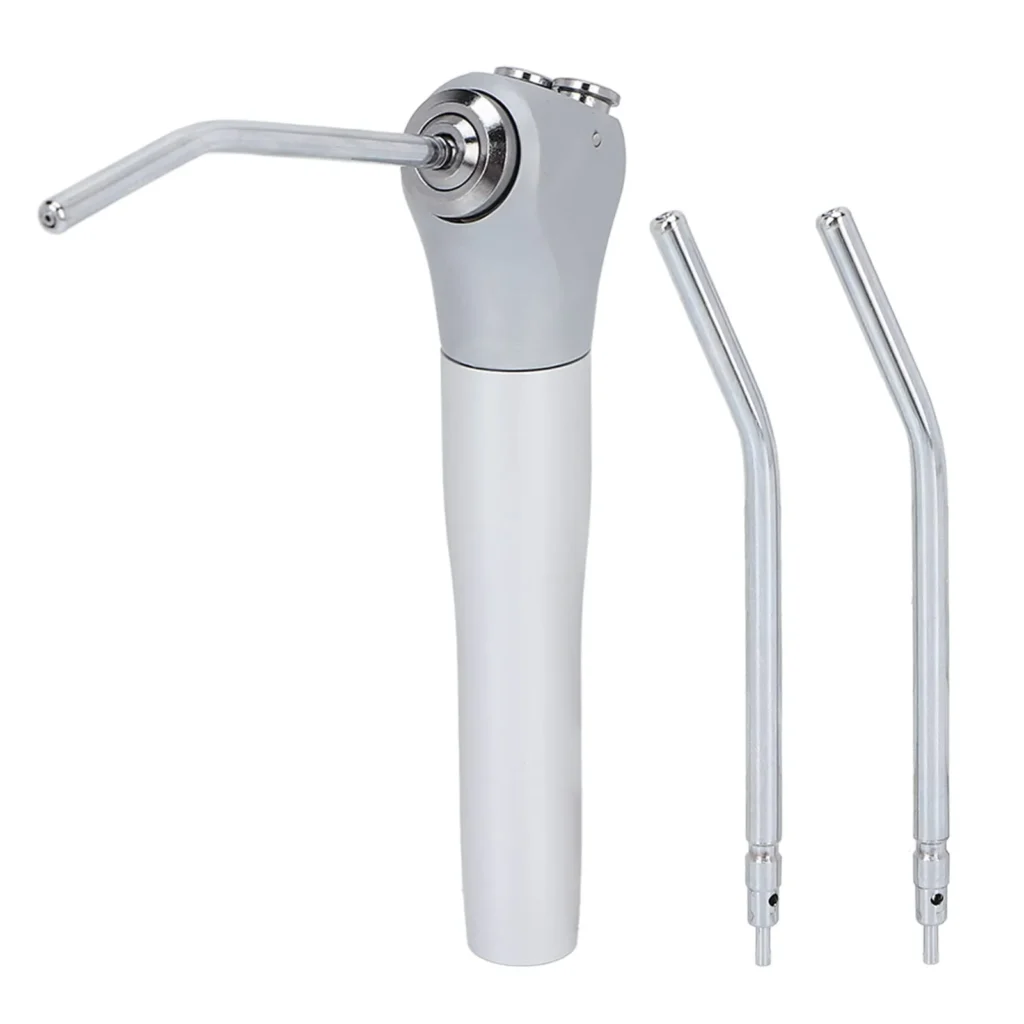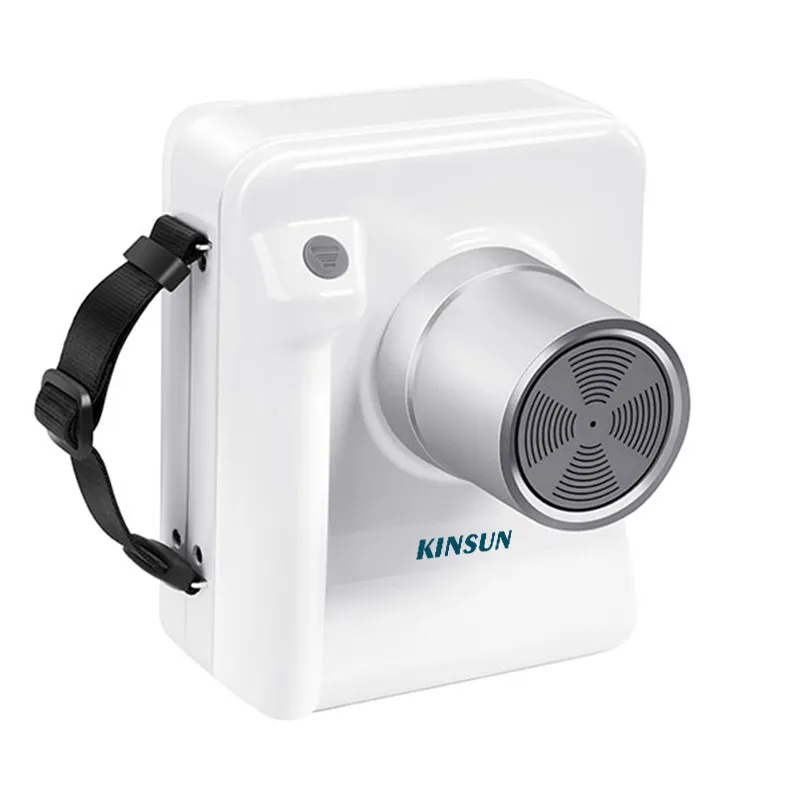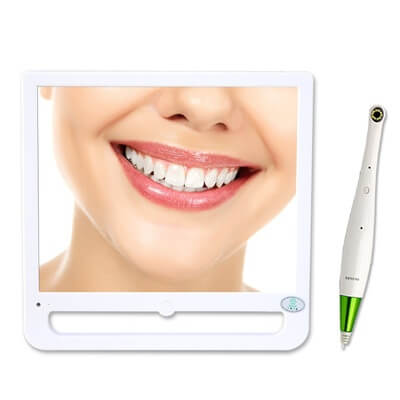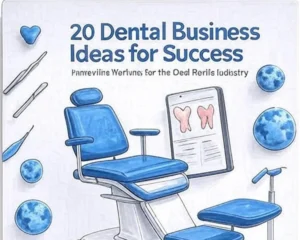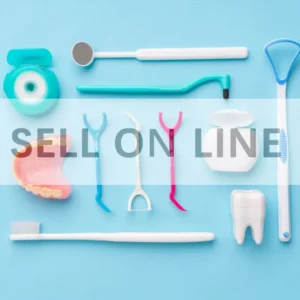Introduction
The dental industry offers a wealth of opportunities for entrepreneurs and professionals seeking innovative dental business ideas to capitalize on the growing demand for oral health solutions. From leveraging e-commerce and social media to providing specialized services like equipment refurbishment and clinic support, the sector is ripe with potential for creative and profitable ventures.
This article presents 20 diverse dental business ideas, each designed to address specific market needs, ranging from product sales and service provision to educational platforms and trade show support. Whether you are a dentist, engineer, marketer, or investor, these ideas provide actionable strategies to enter or expand within the dental industry, combining practical implementation steps with scalable opportunities for long-term success.
1. Selling Dental Products on E-commerce Platforms
Business Model
Selling dental products through online platforms offers a scalable, low-overhead opportunity to reach a global customer base. The core value proposition is providing convenient access to high-quality dental supplies, including toothbrushes, dental floss, oral irrigators, and professional-grade tools (such as dental equipment, dental treatment device, dental accessories), at competitive prices, for dental clinics. To maximize reach, target the top three most-visited e-commerce platforms in your specific market, as these vary by region (e.g., Amazon in the U.S., Alibaba in China, or Lazada in Southeast Asia).
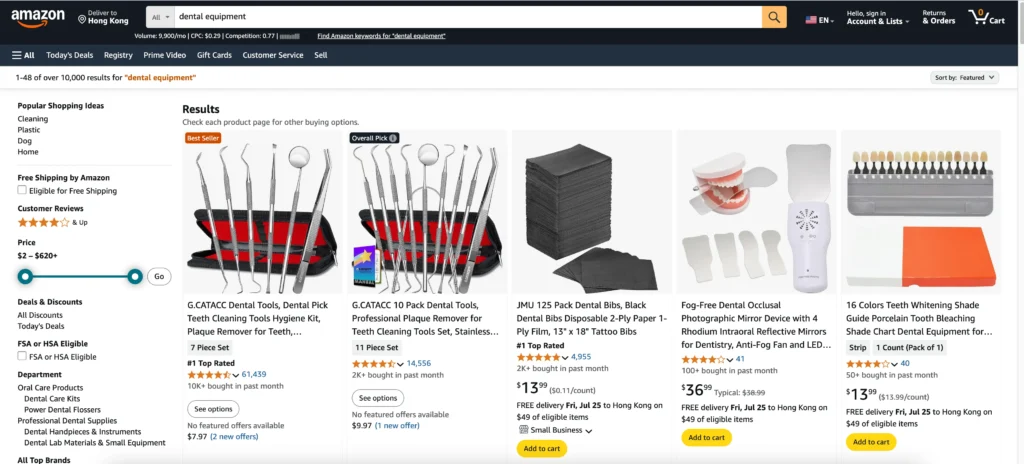
Target Market:
- Individual consumers seeking personal oral care products (e.g., electric toothbrushes, whitening kits).
- Dental professionals (dentists, clinics) are purchasing bulk supplies like disposable instruments, sterilization pouches, or impression materials.
- Small dental businesses or startups looking for cost-effective sourcing options.
Revenue Streams:
- Direct product sales with a markup over wholesale costs (typically 20-50%, depending on product and competition).
- Subscription models for recurring orders (e.g., monthly delivery of dental floss or toothpaste).
- Affiliate partnerships with dental brands or upselling complementary products (e.g., bundling toothpaste with toothbrushes).
- Potential advertising revenue by featuring sponsored dental products on your platform store.
Competitive Advantage:
- Curated selection of certified, high-quality dental products to build trust.
- Competitive pricing through bulk purchasing or direct supplier relationships.
- Fast, reliable shipping and superior customer service to stand out from larger, less specialized retailers.
Practical Implementation
Startup Steps:
- Market Research: Identify high-demand dental products in your target region by analyzing trends on the top three e-commerce platforms by traffic in your market. Use tools like Google Trends, SimilarWeb, or platform analytics to understand consumer preferences (e.g., eco-friendly toothbrushes or professional-grade dental tools).
- Supplier Sourcing: Partner with reputable dental product manufacturers or distributors. Ensure products meet regulatory standards (e.g., FDA, CE, or local health certifications). Negotiate bulk discounts to improve margins.
- Platform Setup: Create seller accounts on the top three e-commerce platforms in your target market. Design a professional storefront with clear product descriptions, high-quality images, and detailed specifications (e.g., material, certifications, usage instructions).
- Inventory Management: Start with a lean inventory to minimize risk. Use dropshipping for low-demand items or maintain a small stock for fast-moving products. Implement inventory tracking software to avoid stockouts.
- Marketing Strategy: Leverage platform-specific advertising tools and social media campaigns targeting dental professionals and health-conscious consumers. Highlight unique selling points like eco-certifications or bulk discounts.
- Customer Support: Offer responsive customer service via platform chat or email, addressing queries about product usage, shipping, or returns. Provide clear return policies to build trust.
Required Resources:
- Initial capital for inventory (estimated $1,000-$5,000 for small-scale startup, depending on product range).
- E-commerce seller accounts (free to low-cost, though platforms charge transaction fees, typically 5-15%).
- Basic website or social media presence for brand visibility (optional but recommended).
- Access to reliable logistics partners for shipping, or use platform-integrated logistics services.
Potential Challenges and Solutions:
- Challenge: High competition from established sellers on popular platforms.
- Solution: Focus on niche products (e.g., biodegradable dental floss, specialized orthodontic tools) or target underserved regions. Offer bundle deals or loyalty discounts to attract repeat customers.
- Challenge: Ensuring Regulatory Compliance for Dental Products.
- Solution: Verify that all products comply with local and international health regulations. Work with suppliers who provide certification documentation.
- Challenge: Managing shipping costs and delivery times for international customers.
- Solution: Partner with reliable logistics providers or use platform fulfillment services. Offer tiered shipping options (e.g., standard vs. express) to cater to different customer needs.
- Challenge: Building customer trust as a new seller.
- Solution: Encourage reviews by offering post-purchase discounts. Provide detailed product information and transparent communication to establish credibility.
Scalability:
- Expand product range to include premium or specialized items (e.g., dental lasers, intraoral cameras) as revenue grows.
- Explore white-labeling or private-label products to build a unique brand identity.
- Consider launching a standalone e-commerce website to reduce reliance on third-party platforms and capture higher margins.
2. Operating a Dental Business Through Social Media
Business Model
Leveraging social media platforms like Facebook Marketplace, TikTok, and Instagram to promote and sell dental products or equipment taps into their vast user bases and dynamic engagement tools. The core value proposition is building a trusted brand through visually appealing, educational, and engaging content that showcases dental products (e.g., oral care kits, dental tools) while driving direct sales. This model capitalizes on social media’s ability to target specific demographics and foster community trust.
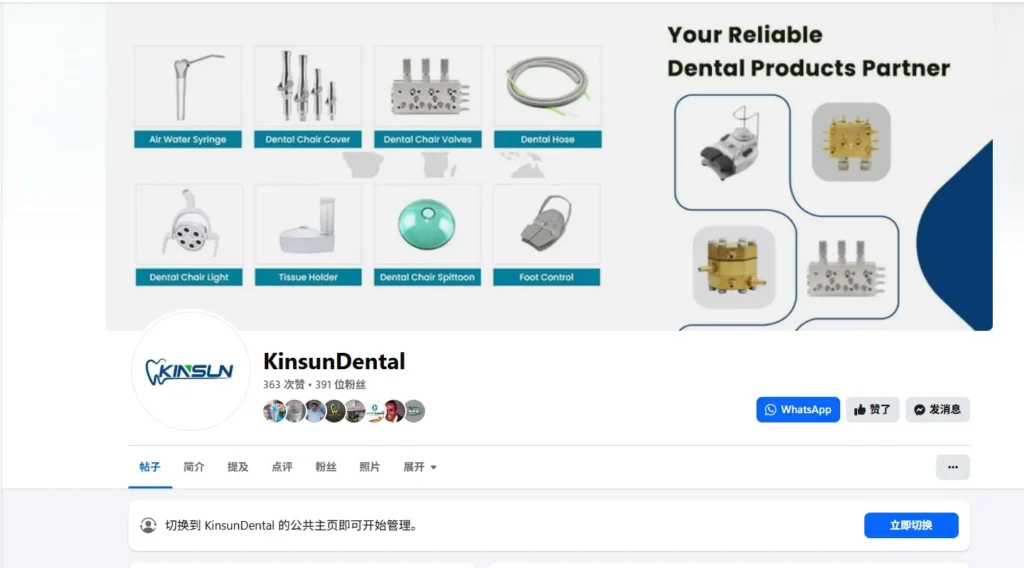
Target Market:
- Health-conscious consumers seeking personal dental care products (e.g., whitening strips, electric toothbrushes).
- Dental professionals or small clinics looking for cost-effective equipment (e.g., sterilization tools, portable X-ray machines).
- Younger demographics active on platforms like TikTok and Instagram, who value trendy or eco-friendly dental products.
Revenue Streams:
- Direct sales of dental products through social media marketplaces or integrated shops (e.g., Instagram Shopping, Facebook Marketplace).
- Commission-based affiliate marketing by promoting dental brands or products.
- Sponsored content or partnerships with dental product manufacturers to showcase their items.
- Subscription boxes for dental care products, promoted through social media campaigns.
Competitive Advantage:
- Engaging, authentic content (e.g., tutorials, reviews, or before-and-after visuals) to build trust and loyalty.
- Targeted advertising using platform analytics to reach specific audiences (e.g., dental students, eco-conscious consumers).
- Lower overhead costs compared to traditional retail, as social media platforms often have minimal setup fees.
Practical Implementation
Startup Steps:
- Market Research: Analyze trending dental products on social media platforms using tools like TikTok’s Creative Center, Instagram Insights, or Facebook Ad Library. Identify popular products (e.g., bamboo toothbrushes, LED whitening kits, dental clinic equipments) and target demographics in your region.
- Supplier Sourcing: Partner with reliable dental product suppliers who offer certified, high-quality products compliant with regulations (e.g., FDA, CE, FCA). Negotiate favorable terms for small-batch orders to test market response.
- Platform Setup: Create business profiles on high-engagement platforms like Facebook Marketplace, Instagram, and TikTok. Optimize profiles with professional branding, including a clear bio, logo, and links to a shop or product catalog.
- Content Strategy: Develop a content plan featuring short videos (e.g., TikTok demos of dental tools), customer testimonials, and educational posts (e.g., “How to Choose the Right Toothbrush”). Use high-quality visuals and consistent branding.
- Sales Integration: Set up shop features like Instagram Shopping or Facebook Marketplace listings. Ensure product listings include detailed descriptions, certifications, and competitive pricing.
- Marketing and Engagement: Run targeted ads on social media platforms, leveraging demographic and interest-based targeting. Engage with followers through comments, live sessions, or Q&A to build community trust.
- Customer Support: Provide prompt responses to inquiries via direct messages or comments. Offer clear return and refund policies to enhance credibility.
Potential Challenges and Solutions:
- Challenge: Standing out in a crowded social media market.
- Solution: Create unique, value-driven content (e.g., dental hygiene tips, behind-the-scenes supplier videos) and use trending hashtags or challenges to boost visibility.
- Challenge: Ensuring Regulatory Compliance for Dental Products.
- Solution: Ensure all products meet health and safety standards. Include certification details in product listings to reassure customers.
- Challenge: Managing order fulfillment and customer expectations.
- Solution: Partner with reliable logistics providers or use platform-integrated shipping solutions. Communicate clear delivery timelines and provide tracking information.
- Challenge: Building a loyal follower base.
- Solution: Post consistently, engage with followers, and offer promotions (e.g., discounts for first-time buyers) to encourage repeat purchases.
Scalability:
- Expand to additional platforms (e.g., Pinterest, YouTube) to diversify reach.
- Develop a branded product line or collaborate with influencers in the dental or wellness space.
- Transition to a standalone website with social media as a primary traffic driver to increase profit margins.
3. Selling Dental Products Through an Independent Website
Business Model
Operating an independent website using platforms like Shopify or WordPress allows you to sell dental products directly to customers, bypassing the high commission fees (typically 5-15%) charged by third-party marketplaces. The core value proposition is offering a curated selection of high-quality dental supplies, such as toothbrushes, whitening kits, and professional-grade tools, with a branded customer experience that builds trust and loyalty. This model prioritizes control over pricing, branding, and customer relationships but requires significant effort in driving traffic and acquiring customers.
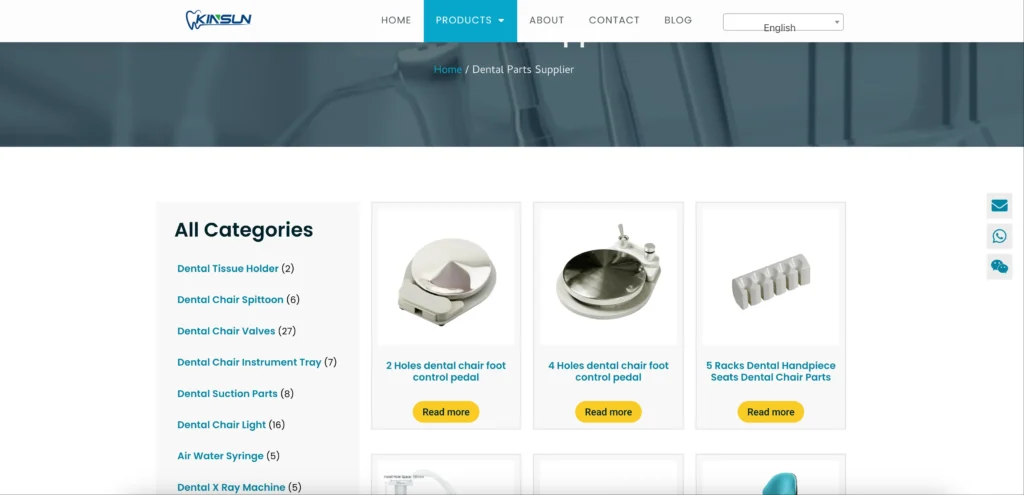
Target Market:
- Individual consumers seeking premium or niche dental care products (e.g., eco-friendly toothbrushes, advanced oral irrigators).
- Dental professionals and clinics are purchasing specialized equipment or bulk supplies (e.g., sterilization pouches, dental mirrors).
- Health-conscious or tech-savvy customers who prefer shopping directly from a trusted brand rather than generic marketplaces.
Revenue Streams:
- Direct product sales with higher profit margins (30-60% markup, as no platform fees are deducted).
- Subscription services for recurring dental product deliveries (e.g., monthly oral care kits).
- Cross-selling complementary products (e.g., toothpaste with electric toothbrushes) or upselling premium items.
- Potential B2B sales to dental clinics for bulk orders or exclusive partnerships.
Competitive Advantage:
- Full control over branding, allowing for a unique and professional customer experience.
- Ability to offer personalized promotions, loyalty programs, or exclusive products not available on marketplaces.
- Direct customer data collection for targeted marketing and improved retention.
Practical Implementation
Startup Steps:
- Market Research: Identify high-demand dental products in your target market using tools like Google Trends, SEMrush, or social media analytics. Focus on niche or trending items (e.g., sustainable dental products, orthodontic accessories) to differentiate from competitors.
- Supplier Sourcing: Partner with certified dental product suppliers who comply with regulations (e.g., FDA, CE, or local health standards). Secure bulk discounts or dropshipping agreements to manage inventory costs.
- Website Development: Choose a platform like Shopify or WordPress (with WooCommerce) to build your store. Invest in a professional, user-friendly design with clear product categories, high-quality images, and detailed descriptions (e.g., material, certifications, usage instructions).
- Payment and Logistics Setup: Integrate secure payment gateways (e.g., Stripe, PayPal) and partner with reliable shipping providers. Offer multiple shipping options (e.g., standard, express) to cater to global customers.
- Marketing Strategy: Drive traffic through search engine optimization (SEO), pay-per-click (PPC) ads on Google, and social media campaigns. Create content like blogs or videos (e.g., “Top 5 Dental Hygiene Tips”) to attract organic traffic.
- Customer Support: Implement live chat, email, or phone support to address customer inquiries about products, shipping, or returns. Offer clear refund and return policies to build trust.
Required Resources:
- Initial investment for inventory ($1,000-$5,000 for small-scale startup, depending on product range) or dropshipping setup ($100-$500).
- Website setup costs: Shopify ($29-$79/month) or WordPress (hosting $5-$20/month, plus themes/plugins ~$100 one-time).
- Marketing budget for ads ($100-$500/month initially) and content creation tools (e.g., Canva, $12.99/month).
- Logistics partnerships or third-party fulfillment services for efficient shipping.
Potential Challenges and Solutions:
- Challenge: Driving traffic to a new website without the built-in audience of marketplaces.
- Solution: Invest in SEO and content marketing to improve organic reach. Use targeted social media ads and influencer partnerships to attract initial customers.
- Challenge: Ensuring Regulatory Compliance for Dental Products.
- Solution: Ensure all products meet local and international health standards. Display certifications prominently on the website to reassure customers.
- Challenge: Higher upfront costs compared to marketplace selling.
- Solution: Start with a lean inventory or dropshipping model to minimize risk. Reinvest profits into expanding product lines and marketing.
- Challenge: Building customer trust without marketplace credibility.
- Solution: Offer transparent policies, secure payment options, and customer reviews. Use testimonials and professional certifications to enhance credibility.
Scalability:
- Expand product offerings to include exclusive or white-labeled dental products to strengthen brand identity.
- Develop a loyalty program or subscription model to increase customer retention.
- Explore B2B opportunities by offering bulk discounts to dental clinics or partnering with dental associations.
4. Selling Dental Books or Dental Courses
Business Model
Selling dental books and professional dental courses targets a niche but high-value market of dental students, practicing dentists, and dental educators. The core value proposition is providing specialized, high-quality educational content that enhances knowledge and skills in dental theory, techniques, and practice. Books can cover foundational topics like dental anatomy or advanced topics like cosmetic dentistry, while courses, developed in collaboration with renowned dental professors, offer practical, hands-on training. This business leverages expertise to generate revenue through direct sales and recurring subscriptions.
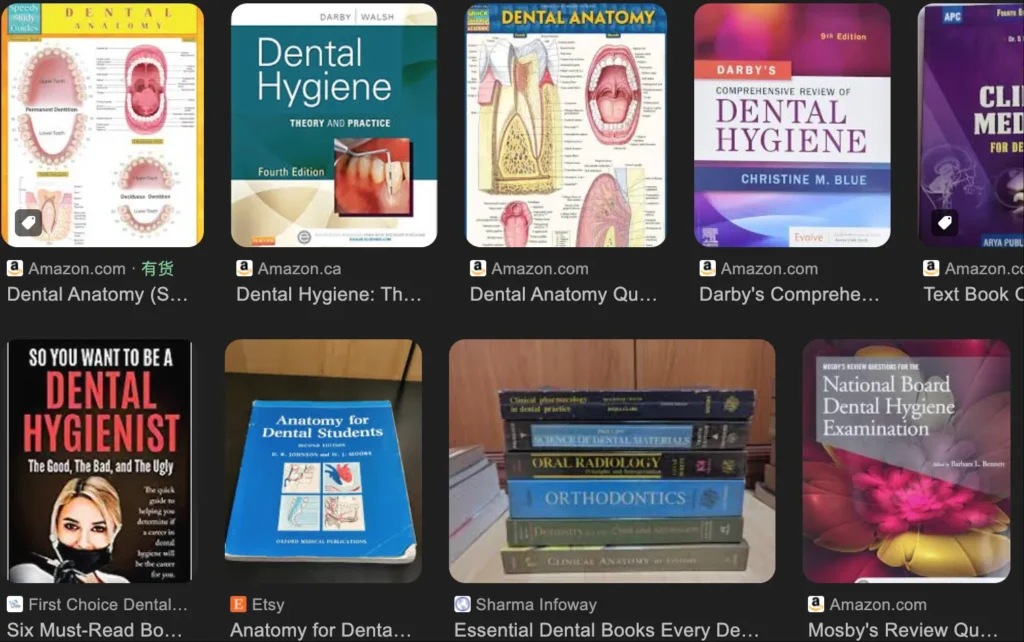
Target Market:
- Dental students seeking textbooks for academic studies (e.g., dental anatomy, orthodontics).
- Practicing dentists looking for continuing education to maintain certifications or learn new techniques.
- Dental schools, clinics, or training institutes purchasing bulk materials for students or staff.
Revenue Streams:
- Direct sales of physical or digital dental books (e.g., eBooks, printed textbooks) with a 30-50% markup.
- Sales of online courses or workshops, priced per module or as subscription-based access (e.g., $50-$500 per course).
- Licensing content to dental schools or professional associations for institutional use.
- Affiliate partnerships with dental publishers or platforms hosting educational content.
Competitive Advantage:
- High-quality, specialized content developed with input from respected dental professionals.
- Flexible delivery formats (e.g., eBooks, video courses) to cater to diverse learning preferences.
- Niche focus on dentistry, addressing specific needs unmet by general educational platforms.
Practical Implementation
Startup Steps:
- Market Research: Identify in-demand topics for dental books and courses by analyzing curriculum needs (e.g., dental board exam prep) and trending areas (e.g., implantology, digital dentistry). Use surveys or platforms like ResearchGate to gather insights from dental students and professionals.
- Content Development: Partner with dental professors or experts to author books or design courses. For books, focus on clear, well-structured content with diagrams and case studies. For courses, create video-based or interactive modules covering practical skills (e.g., restorative techniques).
- Publishing and Platform Setup: Use self-publishing platforms like Amazon Kindle Direct Publishing for books or platforms like Teachable or Thinkific for courses. Ensure professional editing, formatting, and branding for credibility.
- Regulatory Compliance: Verify that content aligns with dental education standards and includes accurate, up-to-date information. For courses, ensure compliance with continuing education credit requirements in target markets.
- Marketing Strategy: Promote through targeted channels, such as dental school networks, LinkedIn groups, and dental conferences. Offer free webinars or sample chapters to attract customers. Use email marketing to nurture leads.
- Distribution and Sales: Sell books via e-commerce platforms or your own website. Host courses on dedicated platforms with secure payment gateways (e.g., Stripe). Offer bundle deals (e.g., book + course) to increase sales.
Required Resources:
- Initial investment for content creation ($2,000-$10,000 for professional editing, design, and video production).
- Self-publishing costs (e.g., $0-$500 for eBooks; $1,000-$3,000 for printed books) or course platform fees ($30-$100/month for Teachable/Thinkific).
- Marketing budget for ads and promotions ($100-$500/month initially).
- Partnerships with dental experts (may involve profit-sharing or consulting fees).
Potential Challenges and Solutions:
- Challenge: High competition from established dental publishers or course providers.
- Solution: Focus on underserved niches (e.g., digital dentistry, pediatric dentistry) or offer unique formats like interactive simulations. Collaborate with well-known professors to enhance credibility.
- Challenge: Ensuring content quality and relevance.
- Solution: Engage subject matter experts for content review. Update materials regularly to reflect new dental research or technologies.
- Challenge: Building a customer base in a specialized market.
- Solution: Leverage partnerships with dental schools or associations. Offer discounts for bulk purchases or student pricing to attract initial customers.
- Challenge: High upfront costs for course production.
- Solution: Start with low-cost eBooks or short courses, reinvesting profits into more comprehensive content. Use affordable tools like Canva for visuals or Zoom for recording.
Scalability:
- Expand content offerings to include advanced topics or specialized certifications (e.g., laser dentistry).
- Develop a subscription-based platform for ongoing access to a library of courses and resources.
- License content to international dental schools or translate materials for global markets.
5. Operating a Business Selling Dental-Themed Creative Products
Business Model
Selling dental-themed creative products, such as wall art, decorations, promotional gifts, and educational models, caters to dental clinics, institutions, and enthusiasts seeking unique, non-medical items to enhance their spaces or branding. The core value proposition is offering aesthetically appealing, dental-inspired products that combine functionality and creativity, such as tooth-shaped keychains, dental anatomy posters, or custom-branded promotional items. This business taps into the niche demand for decorative and marketing materials tailored to the dental industry.
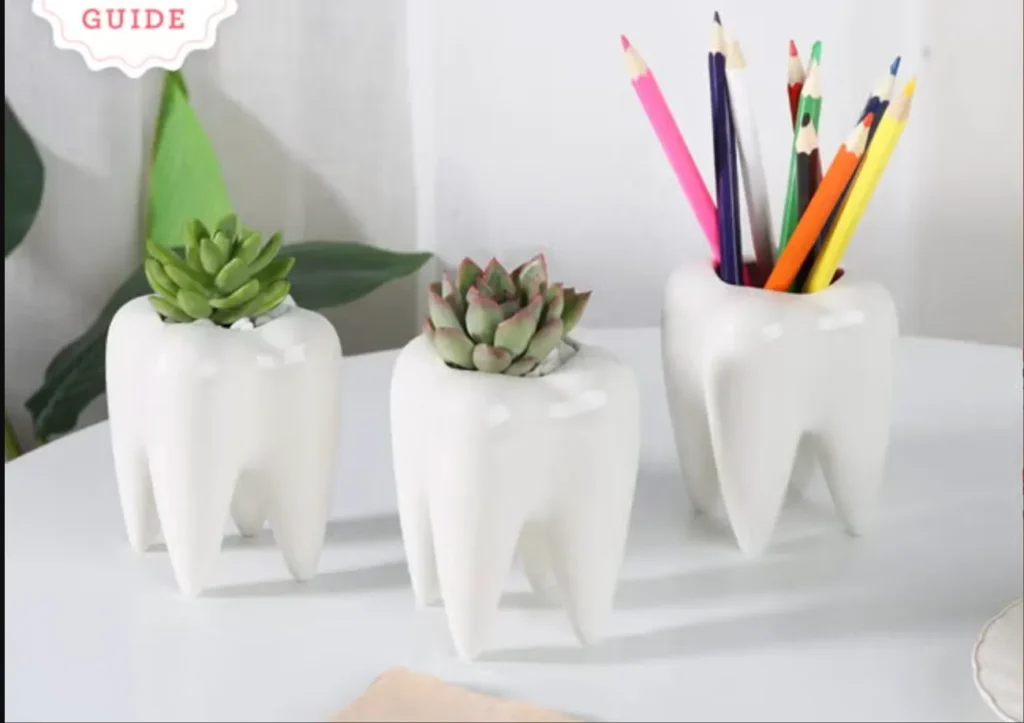
Target Market:
- Dental clinics and offices looking to decorate waiting rooms or treatment areas with themed art or models.
- Dental schools and training centers needing educational tools like anatomical models or posters.
- Dental professionals and patients purchasing novelty items or gifts (e.g., tooth-shaped pens, mugs) for personal or promotional use.
Revenue Streams:
- Direct sales of creative products through online stores, trade shows, or direct-to-business outreach (30-50% markup).
- Custom orders for branded promotional items (e.g., clinic-logoed pens or tote bags) for dental practices.
- Bulk sales to dental institutions or associations for educational or marketing purposes.
- Subscription boxes featuring curated dental-themed merchandise for clinics or enthusiasts.
Competitive Advantage:
- Unique, high-quality designs tailored specifically to the dental industry, unavailable in generic retail.
- Customization options for clinics to align products with their branding.
- Eco-friendly or sustainable materials to appeal to environmentally conscious buyers.
Practical Implementation
Startup Steps:
- Market Research: Identify popular dental-themed products by surveying dental clinics and schools or analyzing trends on platforms like Etsy or Pinterest. Focus on items like posters, models, or promotional gifts that resonate with dental professionals.
- Product Design and Sourcing: Collaborate with designers or manufacturers to create unique products (e.g., 3D-printed tooth models, custom wall art). Source materials from reliable suppliers, ensuring quality and cost-effectiveness.
- Sales Platform Setup: Launch an online store using Shopify or Etsy to sell products globally. Create detailed listings with high-quality images, descriptions, and customization options. Alternatively, pitch directly to dental clinics via email or trade shows.
- Branding and Marketing: Develop a cohesive brand identity with a focus on dental aesthetics. Promote through social media (e.g., Instagram, Pinterest) with visually appealing content, and target dental professionals via LinkedIn or industry events.
- Order Fulfillment: Partner with local or international manufacturers for small-batch production or dropshipping. Use reliable shipping providers to ensure timely delivery, especially for custom orders.
- Customer Support: Offer responsive support via email or live chat to handle inquiries about customization, bulk orders, or shipping. Provide clear policies for returns or defective items.
Required Resources:
- Initial investment for product design and inventory ($1,000-$5,000 for small-scale production or dropshipping setup).
- E-commerce platform costs (e.g., Shopify at $29-$79/month or Etsy fees of ~6.5% per transaction).
- Marketing budget for social media ads and content creation ($100-$300/month initially).
- Design tools (e.g., Canva Pro, $12.99/month) or freelance designers for custom products ($200-$1,000 per project).
Potential Challenges and Solutions:
- Challenge: Competing with generic gift or decor retailers.
- Solution: Focus on dental-specific designs and customization options. Highlight niche appeal through targeted marketing to dental professionals.
- Challenge: High costs for custom product development.
- Solution: Start with low-cost items like posters or small gifts, reinvesting profits into more complex products like 3D models. Use print-on-demand services to reduce upfront costs.
- Challenge: Building awareness in a niche market.
- Solution: Partner with dental associations or attend dental trade shows to showcase products. Offer introductory discounts to clinics for bulk purchases.
- Challenge: Managing inventory for diverse product types.
- Solution: Use dropshipping or print-on-demand for low-demand items to minimize storage costs. Implement inventory tracking software for efficient stock management.
Scalability:
- Expand product lines to include premium or interactive items (e.g., augmented reality dental models).
- Offer white-label products for dental brands or clinics to resell under their own branding.
- Develop partnerships with dental influencers or blogs to increase visibility and drive sales.
6. Becoming an Exclusive Agent for Dental Product Manufacturers
Business Model
Acting as an exclusive agent for dental product manufacturers, particularly those from regions like China seeking global distributors, offers a lucrative opportunity to distribute dental equipment and supplies. The core value proposition is securing high-quality dental products at significantly discounted prices, supported by manufacturer-provided promotional resources, and selling them at a profit in your target market. This model focuses on building strong relationships with manufacturers and leveraging their support to drive sales.
Target Market:
- Dental clinics and hospitals seeking cost-effective, high-quality equipment (e.g., dental chairs, X-ray machines, sterilization tools).
- Dental supply retailers or distributors looking for bulk purchases of professional-grade products.
- Dental schools or training centers requiring equipment for educational purposes.
Revenue Streams:
- Sales of dental products with substantial markups (30-70%) due to exclusive, discounted wholesale pricing.
- Commissions or bonuses from manufacturers for meeting sales targets or expanding market reach.
- Service contracts for equipment maintenance or installation, if offered as part of the agency agreement.
- Potential revenue from upselling complementary products or accessories provided by the manufacturer.
Competitive Advantage:
- Access to exclusive, high-quality products at lower costs due to direct manufacturer agreements.
- Marketing and technical support from manufacturers, reducing operational overhead.
- Ability to offer competitive pricing and tailored solutions to local markets.
Practical Implementation
Startup Steps:
- Market Research: Identify high-demand dental products in your region (e.g., intraoral scanners, dental drills) using industry reports or trade show insights. Research manufacturers, particularly in regions like China, known for cost-effective dental equipment.
- Manufacturer Partnership: Contact reputable dental product manufacturers seeking agents. Negotiate exclusive agency agreements, ensuring clear terms on pricing, territory, and promotional support. Verify product certifications (e.g., FDA, CE) for compliance.
- Sales Channel Setup: Establish sales channels, such as a dedicated website, B2B outreach to clinics, or partnerships with local distributors. Create professional product catalogs highlighting specifications and benefits.
- Marketing Strategy: Leverage manufacturer-provided materials (e.g., brochures, videos) and create localized marketing campaigns. Attend dental trade shows, advertise in industry journals, or use LinkedIn to connect with dental professionals.
- Logistics and Distribution: Coordinate with manufacturers for shipping and inventory management. Use third-party logistics providers or manufacturer-supported fulfillment to ensure timely delivery.
- Customer Support: Provide after-sales support, including technical assistance, warranty claims, or training on equipment use. Build trust through responsive communication and reliable service.
Required Resources:
- Initial investment for sample inventory or marketing materials ($2,000-$10,000, depending on product range).
- Website or CRM system for B2B sales (e.g., Shopify at $29-$79/month or Salesforce at $25-$150/month per user).
- Marketing budget for trade shows, ads, or promotional events ($500-$2,000/month initially).
- Legal support for reviewing agency contracts ($200-$1,000 one-time).
Potential Challenges and Solutions:
- Challenge: Securing exclusive agency agreements in competitive markets.
- Solution: Target emerging manufacturers or niche products with less competition. Highlight your local market knowledge and distribution network to appeal to manufacturers.
- Challenge: Ensuring product compliance with local regulations.
- Solution: Work only with manufacturers providing certified products. Consult regulatory experts to navigate local health standards.
- Challenge: Building a client base in a specialized industry.
- Solution: Leverage manufacturer networks, dental associations, or trade shows to connect with potential buyers. Offer introductory discounts or financing options for expensive equipment.
- Challenge: Managing logistics for large equipment.
- Solution: Partner with reliable logistics providers experienced in handling medical equipment. Negotiate bulk shipping rates with manufacturers to reduce costs.
Scalability:
- Expand agency agreements to include additional manufacturers or product lines.
- Develop a regional distribution network by partnering with sub-agents or local retailers.
- Offer value-added services, such as equipment installation or maintenance training, to increase revenue.
7. Providing Product Development Services for Dental Equipment Manufacturers
Business Model
Offering product development services, such as design and engineering, to dental equipment manufacturers leverages specialized expertise in design or structural engineering within the dental industry. The core value proposition is delivering innovative, functional, and regulatory-compliant product designs that help manufacturers create cutting-edge dental equipment, such as dental chairs, imaging systems, or surgical tools. This service-based model targets manufacturers, particularly in regions like China, where there is high demand for new product designs to stay competitive in the global market.
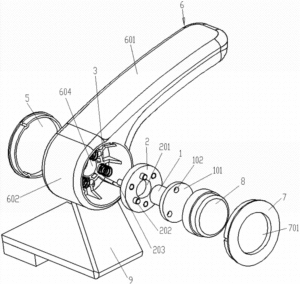
Target Market:
- Dental equipment manufacturers seeking innovative designs to enhance their product lines.
- Startups or small-scale dental manufacturers needing cost-effective design solutions to enter the market.
- Established dental companies looking to outsource specialized design tasks to improve efficiency.
Revenue Streams:
- Project-based fees for product design or engineering services (e.g., $5,000-$50,000 per project, depending on complexity).
- Retainer contracts for ongoing consultation or iterative design work.
- Licensing fees for proprietary designs or patents developed during the process.
- Revenue from prototyping services or collaboration on product testing.
Competitive Advantage:
- Specialized expertise in dental product design, combining technical skills with industry-specific knowledge.
- Ability to deliver customized, innovative solutions that meet regulatory standards (e.g., FDA, CE).
- Cost-effective services compared to in-house design teams, appealing to manufacturers in cost-sensitive markets.
Practical Implementation
Startup Steps:
- Market Research: Identify manufacturers in need of design services by analyzing industry trends and contacting dental equipment companies, particularly in high-growth markets like China. Attend trade shows or use platforms like Alibaba to find potential clients.
- Portfolio Development: Create a portfolio showcasing previous dental product designs or relevant engineering projects. Highlight experience with dental tools, ergonomics, or regulatory compliance to build credibility.
- Service Offerings: Define services, such as 3D modeling, CAD design, prototyping, or material selection. Offer end-to-end solutions, from concept sketches to final prototypes, tailored to dental applications.
- Client Acquisition: Reach out to manufacturers via LinkedIn, industry forums, or dental trade shows. Offer free consultations or initial design proposals to attract clients. Leverage referrals from existing contacts in the dental industry.
- Project Execution: Use design software (e.g., SolidWorks, AutoCAD) to create detailed schematics. Collaborate with clients to ensure designs meet functionality, cost, and regulatory requirements. Coordinate with prototyping facilities if needed.
- Regulatory Compliance: Ensure designs comply with international standards (e.g., ISO 13485 for medical devices). Work with regulatory consultants to validate designs for certifications.
Required Resources:
- Design software licenses (e.g., SolidWorks at $3,000-$7,000/year or AutoCAD at $1,800/year).
- Initial investment for prototyping tools or partnerships ($1,000-$5,000 for small-scale projects).
- Marketing budget for portfolio website, trade show attendance, or LinkedIn ads ($500-$2,000/month).
- Access to a network of prototyping facilities or testing labs for physical models.
Potential Challenges and Solutions:
- Challenge: Competing with established design firms or in-house teams.
- Solution: Focus on niche dental products (e.g., compact intraoral scanners) or offer competitive pricing for smaller manufacturers. Highlight unique expertise in dental ergonomics or materials.
- Challenge: Navigating complex regulatory requirements for dental equipment.
- Solution: Partner with regulatory consultants or ensure familiarity with standards like FDA or CE. Include compliance checkpoints in the design process.
- Challenge: Securing initial clients without a strong track record.
- Solution: Offer discounted pilot projects or collaborate with smaller manufacturers to build a portfolio. Leverage testimonials from satisfied clients to gain trust.
- Challenge: High costs for prototyping or advanced design tools.
- Solution: Start with software-based designs and outsource prototyping to third-party facilities. Reinvest profits into advanced tools or in-house capabilities.
Scalability:
- Expand services to include software integration for smart dental devices (e.g., AI-powered diagnostic tools).
- Build a team of designers or engineers to handle multiple projects simultaneously.
- Develop proprietary designs or patents to license to manufacturers for recurring revenue.
8. Opening or Investing in a Dental Clinic
Business Model
Opening or investing in a dental clinic provides a direct way to deliver dental care services while capitalizing on the growing demand for oral health solutions. The core value proposition is offering high-quality dental treatments, such as cleanings, fillings, orthodontics, or cosmetic procedures, in a well-located, patient-centric facility. By leveraging doctor expertise, market connections, or a strategic location, this business can attract a steady client base and generate consistent revenue through patient services.
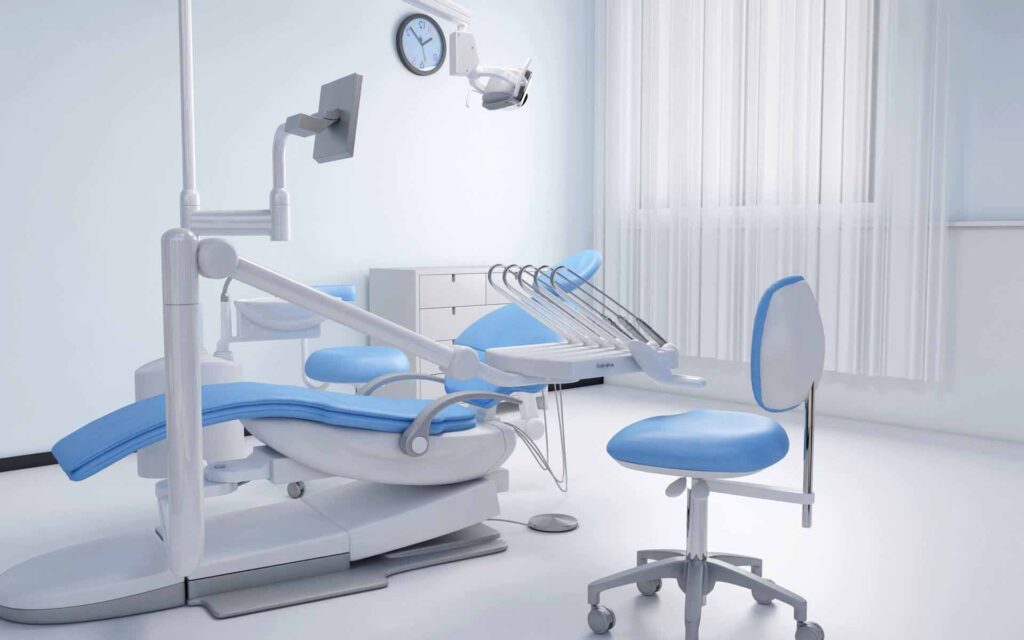
Target Market:
- Local residents seeking routine dental care (e.g., check-ups, cleanings) or specialized treatments (e.g., implants, whitening).
- Families or professionals in urban or underserved areas with limited access to quality dental services.
- Dental tourists, if the clinic is in a region known for affordable, high-quality care.
Revenue Streams:
- Fees for dental services, ranging from $50-$500 per procedure, depending on complexity (e.g., cleanings vs. root canals).
- Subscription or membership plans for regular patients (e.g., annual check-up and cleaning packages).
- Sales of add-on products like whitening kits or oral care items available at the clinic.
- Insurance reimbursements from patients with dental coverage.
Competitive Advantage:
- Strategic location in high-traffic or underserved areas to capture demand.
- Access to skilled dentists and modern equipment to ensure quality care.
- Strong patient experience through excellent service, modern facilities, and flexible payment options.
Practical Implementation
Startup Steps:
- Market Research: Analyze the local market to identify demand for dental services and competition. Assess population density, income levels, and access to existing clinics. Use tools like demographic reports or surveys to pinpoint ideal locations.
- Location Selection: Choose a site with high visibility and accessibility (e.g., near commercial hubs or residential areas). Ensure compliance with zoning and health regulations for medical facilities.
- Licensing and Staffing: Secure necessary licenses (e.g., business permits, dental practice certifications) and hire qualified dentists, hygienists, and support staff. Verify credentials to meet local regulatory standards.
- Clinic Setup: Invest in modern dental equipment (e.g., X-ray machines, dental chairs) and design a welcoming, hygienic facility. Ensure compliance with health and safety standards (e.g., sterilization protocols).
- Marketing Strategy: Promote the clinic through local advertising, social media, and partnerships with community organizations. Offer introductory discounts or free consultations to attract initial patients.
- Operations and Patient Care: Implement a booking system (e.g., online scheduling software) and maintain high standards of care. Provide clear pricing and accept multiple payment methods, including insurance.
Required Resources:
- Initial investment for clinic setup ($100,000-$500,000, depending on location, equipment, and scale).
- Licensing and regulatory compliance costs ($1,000-$10,000, varying by region).
- Staffing costs (e.g., dentist salaries at $80,000-$150,000/year, hygienists at $40,000-$70,000/year).
- Marketing budget for launch campaigns ($1,000-$5,000/month initially).
Potential Challenges and Solutions:
- Challenge: High startup costs for equipment and facility setup.
- Solution: Start with a smaller clinic or lease equipment to reduce upfront costs. Seek investors or loans to spread financial burden.
- Challenge: Attracting patients in a competitive market.
- Solution: Offer unique services (e.g., cosmetic dentistry, evening hours) and focus on patient experience through personalized care and modern facilities.
- Challenge: Navigating complex regulatory requirements.
- Solution: Hire a consultant familiar with local health regulations to ensure compliance. Partner with experienced dental professionals to streamline operations.
- Challenge: Retaining skilled staff in a competitive industry.
- Solution: Offer competitive salaries, professional development opportunities, and a positive work environment to attract and retain talent.
Scalability:
- Expand to multiple locations in high-demand areas or underserved regions.
- Introduce specialized services (e.g., orthodontics, dental implants) to increase revenue per patient.
- Franchise the clinic model or partner with investors to scale operations regionally.
9. Providing Feasibility Study Reports for Dental Clinic Investors
Business Model
Offering professional feasibility study reports for companies or dentists planning to open dental clinics leverages expertise in market analysis, financial forecasting, and investment evaluation. The core value proposition is delivering comprehensive, data-driven reports that help clients make informed decisions about launching or expanding a dental clinic. By providing actionable insights into market potential, operational requirements, and financial viability, this service generates revenue through consulting fees.

Target Market:
- Dentists or entrepreneurs planning to open new dental clinics.
- Healthcare investment firms seeking to fund dental practices.
- Existing dental clinics considering expansion or new locations.
Revenue Streams:
- Project-based fees for feasibility study reports (e.g., $2,000-$10,000 per report, depending on scope and complexity).
- Retainer contracts for ongoing consulting or follow-up analyses.
- Additional services, such as competitor analysis or location scouting, charged separately.
- Subscription-based access to market intelligence or industry reports for recurring clients.
Competitive Advantage:
- Specialized expertise in the dental industry, combining market insights with financial and operational analysis.
- Customized, actionable reports tailored to specific client needs and local market conditions.
- Credibility through data-driven methodologies and industry-specific knowledge.
Practical Implementation
Startup Steps:
- Market Research: Develop expertise in dental industry trends, including demand for services, competition, and regulatory requirements. Use tools like IBISWorld, Statista, or local healthcare data to gather insights.
- Service Development: Create standardized templates for feasibility reports, covering market analysis, financial projections, regulatory compliance, and operational plans. Include sections on location analysis, patient demographics, and ROI estimates.
- Client Acquisition: Target potential clients through dental associations, LinkedIn, or industry events like dental trade shows. Offer free webinars or initial consultations to showcase expertise and attract leads.
- Report Creation: Use software like Excel, Tableau, or SPSS for data analysis and financial modeling. Collaborate with clients to gather specific data (e.g., target location, budget) and tailor reports to their needs.
- Marketing Strategy: Build a professional website showcasing sample reports (anonymized) and case studies. Promote services through content marketing (e.g., blogs on dental market trends) and targeted ads on LinkedIn or Google.
- Delivery and Support: Deliver reports in professional formats (e.g., PDF, presentations) and offer follow-up consultations to explain findings or refine strategies. Ensure clear communication to build trust.
Required Resources:
- Analytical tools for market and financial analysis (e.g., Excel free with Microsoft 365, Tableau at $15-$70/month per user).
- Initial investment for website development and branding ($500-$2,000 for a professional site).
- Marketing budget for ads, content creation, or trade show attendance ($300-$1,500/month initially).
- Access to industry databases or subscriptions (e.g., Statista at $39-$199/month) for reliable data.
Potential Challenges and Solutions:
- Challenge: Building credibility in a niche consulting market.
- Solution: Partner with dental industry experts or associations to validate expertise. Highlight successful case studies or testimonials to attract clients.
- Challenge: Accessing accurate, localized market data.
- Solution: Use a combination of public data sources, client-provided information, and industry networks to ensure robust analysis. Engage local experts if needed.
- Challenge: High competition from general consulting firms.
- Solution: Focus on dental-specific expertise and offer competitive pricing for smaller clients. Differentiate with detailed, actionable insights tailored to the dental industry.
- Challenge: Time-intensive report creation for complex projects.
- Solution: Streamline processes with templates and automation tools. Outsource non-core tasks like data entry or graphic design to freelancers.
Scalability:
- Expand services to include strategic planning, operational consulting, or clinic launch support.
- Develop a team of analysts to handle multiple projects simultaneously.
- Create a subscription-based platform for ongoing market insights or pre-made feasibility templates for smaller clinics.
10. Providing One-Stop Business Support Services for Dental Clinics
Business Model
Offering a one-stop suite of business support services for dental clinics, including design, renovation, equipment procurement, installation, and staff recruitment, provides a comprehensive solution for new or expanding clinics. The core value proposition is delivering customized, end-to-end services that streamline the process of setting up or upgrading a dental practice, saving clients time and ensuring quality. Services can be offered individually or bundled, allowing flexibility to meet diverse client needs.
Target Market:
- Entrepreneurs or dentists opening new dental clinics.
- Existing clinics seeking to renovate or upgrade facilities and operations.
- Dental chains or franchises expanding to new locations.
Revenue Streams:
- Project-based fees for clinic design ($2,000-$10,000 per project, depending on scope).
- Renovation service contracts ($10,000-$50,000, depending on clinic size and complexity).
- Procurement and installation services, with a 20-30% markup on equipment costs or flat fees ($5,000-$20,000 per project).
- Recruitment service fees, either flat ($1,000-$5,000 per hire) or percentage-based (10-20% of annual salary).
- Bundled service packages for comprehensive support, offering discounts for multiple services.
Competitive Advantage:
- Comprehensive, tailored solutions that reduce the complexity of clinic setup or expansion.
- Expertise in dental-specific design, equipment, and staffing needs, ensuring compliance and functionality.
- Strong supplier and professional networks to deliver cost-effective, high-quality services.
Practical Implementation
Startup Steps:
- Market Research: Analyze demand for dental clinic support services in your target region. Identify pain points for new clinics (e.g., regulatory compliance, equipment sourcing) using industry reports or surveys of dental professionals.
- Service Development: Define service packages, including clinic design (e.g., layout for patient flow), renovation (e.g., sterilization-compliant spaces), equipment procurement (e.g., dental chairs, X-ray machines), and recruitment (e.g., dentists, hygienists). Ensure services meet local health regulations.
- Partnerships and Sourcing: Build relationships with dental equipment suppliers, construction firms, and recruitment agencies. Negotiate bulk discounts or preferred rates to offer competitive pricing to clients.
- Business Setup: Establish a professional brand with a website showcasing service offerings and case studies. Obtain necessary licenses for construction or consulting services, if required by local regulations.
- Marketing Strategy: Target dental entrepreneurs through LinkedIn, dental trade shows, and industry associations. Offer free consultations or webinars on clinic setup to attract clients. Use content marketing (e.g., blogs on clinic design trends) to build authority.
- Project Management: Use project management tools (e.g., Trello, Asana) to coordinate design, renovation, procurement, and recruitment tasks. Ensure clear communication with clients and deliver projects on time and within budget.
Required Resources:
- Initial investment for partnerships and marketing ($5,000-$20,000 for website, branding, and initial outreach).
- Software for design (e.g., AutoCAD at $1,800/year) and project management (e.g., Asana at $10-$24/month per user).
- Access to reliable suppliers and contractors for equipment and renovation services.
- Recruitment database or agency partnerships (e.g., Indeed for Employers at $100-$500/month for job postings).
Potential Challenges and Solutions:
- Challenge: Coordinating multiple services across different providers.
- Solution: Use robust project management systems and maintain strong communication with all partners. Assign dedicated project managers to oversee each client engagement.
- Challenge: Ensuring compliance with dental and construction regulations.
- Solution: Partner with regulatory consultants or hire staff with expertise in medical facility standards (e.g., OSHA, local health codes).
- Challenge: High competition from general consulting or construction firms.
- Solution: Differentiate by specializing in dental-specific needs (e.g., sterilization room design, dental equipment expertise). Highlight successful case studies to build credibility.
- Challenge: High upfront costs for large projects.
- Solution: Start with smaller services (e.g., design or recruitment) and reinvest profits into expanding capabilities. Offer phased payment plans to attract clients with budget constraints.
Scalability:
- Expand service offerings to include ongoing clinic management consulting or maintenance services.
- Build a network of regional partners to serve multiple locations or international markets.
- Develop a franchise model for standardized clinic setup services, targeting dental chains.
11. Providing Marketing and Promotion Services for Dental Clinics
Business Model
Offering marketing and promotion services for dental clinics involves creating tailored marketing campaigns and materials to boost clinic visibility and attract new patients. The core value proposition is designing effective, data-driven strategies that leverage both online and offline channels to increase patient footfall, particularly during peak periods like student holidays. By helping clinics enhance their brand awareness and influence, this service drives client acquisition and generates revenue through service fees.

Target Market:
- Independent dental clinics seeking to grow their patient base.
- Dental chains or franchises aiming to promote new locations or services.
- Clinics targeting specific demographics, such as students during holiday seasons or families in local communities.
Revenue Streams:
- Project-based fees for marketing campaign development ($1,000-$5,000 per campaign, depending on scope).
- Retainer contracts for ongoing marketing support ($500-$2,000/month).
- Fees for creating marketing materials, such as social media content, flyers, or videos ($200-$1,000 per piece).
- Performance-based bonuses tied to measurable outcomes, like patient appointment increases.
Competitive Advantage:
- Specialized expertise in dental industry marketing, understanding patient motivations and seasonal trends.
- Customized, multi-channel campaigns that combine digital and traditional marketing for maximum reach.
- Measurable results through analytics, ensuring clients see a clear return on investment.
Practical Implementation
Startup Steps:
- Market Research: Analyze local dental markets to identify patient demographics, seasonal trends (e.g., student holidays), and competition. Use tools like Google Analytics or social media insights to understand effective marketing channels for dental services.
- Service Development: Create service packages, including campaign planning, content creation (e.g., social media posts, videos), and offline materials (e.g., flyers, banners). Focus on campaigns targeting specific periods, like student holiday promotions for orthodontics or cleanings.
- Client Acquisition: Reach out to dental clinics via LinkedIn, dental associations, or local business networks. Offer free marketing audits or sample campaign proposals to attract initial clients.
- Campaign Execution: Develop campaigns using tools like Canva for visuals, Hootsuite for social media scheduling, or Google Ads for online promotion. Coordinate offline efforts, such as local events or print advertising, to complement digital strategies.
- Marketing Channels: Leverage online platforms (e.g., Instagram, Facebook, Google My Business) for targeted ads and local SEO. Use offline methods like community sponsorships or direct mail to reach local audiences.
- Performance Tracking: Use analytics tools (e.g., Google Analytics, Meta Business Suite) to monitor campaign performance, such as website traffic or appointment bookings. Provide clients with regular reports to demonstrate impact.
Required Resources:
- Marketing software subscriptions (e.g., Canva Pro at $12.99/month, Hootsuite at $19-$99/month).
- Initial investment for website and portfolio development ($500-$2,000 for a professional site).
- Marketing budget for sample campaigns or client acquisition ($300-$1,000/month initially).
- Access to freelance designers or videographers for high-quality content ($200-$1,000 per project).
Potential Challenges and Solutions:
- Challenge: Competing with general marketing agencies.
- Solution: Focus on dental-specific expertise, such as understanding patient acquisition during holidays or dental service promotion. Highlight case studies of successful dental campaigns.
- Challenge: Demonstrating tangible results to clients.
- Solution: Set clear, measurable goals (e.g., 20% increase in appointments) and use analytics to track performance. Provide transparent reports to build trust.
- Challenge: Limited budgets of small dental clinics.
- Solution: Offer tiered service packages, starting with low-cost options like social media management. Bundle services for cost savings to attract budget-conscious clients.
- Challenge: Creating engaging, compliant marketing content.
- Solution: Ensure all materials adhere to healthcare advertising regulations (e.g., avoiding misleading claims). Collaborate with dental professionals to validate content accuracy.
Scalability:
- Expand services to include reputation management or patient retention strategies.
- Build a team of marketers to handle multiple clients or larger campaigns.
- Develop pre-made marketing templates or automated tools for smaller clinics to reduce costs and increase reach.
12. Manufacturing or Assembling Dental Equipment
Business Model
Producing or assembling dental equipment by sourcing components, particularly from cost-effective markets like China, leverages lower import tariffs on parts compared to finished products. The core value proposition is offering high-quality, locally assembled dental equipment, such as dental handpieces or imaging systems, at competitive prices while building a branded product line. Alternatively, businesses with R&D capabilities can develop proprietary dental products and outsource manufacturing to Chinese vendors, capitalizing on cost efficiencies and customization.
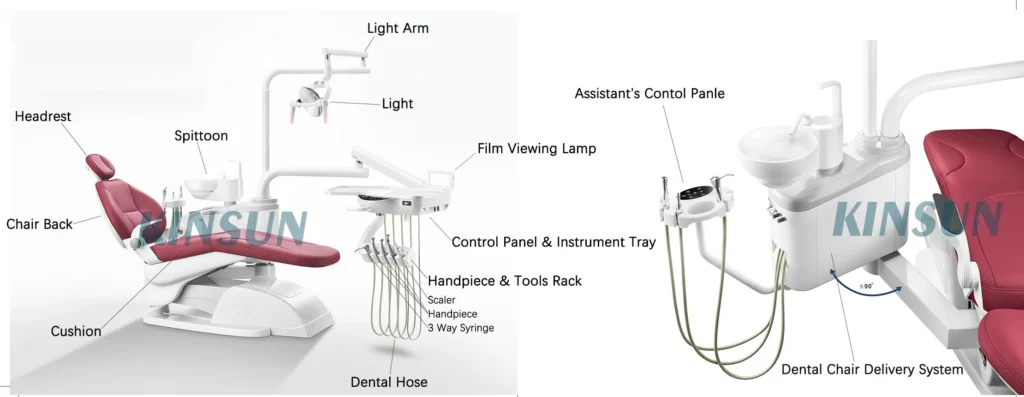
Target Market:
- Dental clinics and hospitals seeking affordable, reliable equipment (e.g., dental handpieces, dental unit, sterilizers).
- Distributors or retailers of dental equipment looking for cost-effective, branded products.
- Dental schools or training centers requiring equipment for educational purposes.
Revenue Streams:
- Sales of assembled dental equipment with a 30-50% markup over component and labor costs.
- Custom orders for specialized equipment tailored to client needs (e.g., high-speed handpieces).
- Licensing proprietary designs to other manufacturers or distributors.
- Maintenance or spare parts sales for assembled equipment.
Competitive Advantage:
- Cost savings from importing components with lower tariffs, enabling competitive pricing.
- Ability to create a unique brand with locally assembled or custom-designed products.
- Flexibility to meet local market needs through tailored assembly or proprietary product development.
Practical Implementation
Startup Steps:
- Market Research: Identify high-demand dental equipment in your region (e.g., dental handpieces, intraoral cameras) using industry reports or trade show insights. Confirm local tariff policies to ensure cost advantages for importing components versus finished products.
- Supplier Sourcing: Partner with reputable Chinese manufacturers for components like handpiece turbines, bearings, or imaging sensors. Verify supplier reliability and ensure components meet international standards (e.g., ISO 13485, CE).
- Assembly Setup: Establish a local assembly facility with necessary equipment (e.g., precision tools, cleanroom for sterile components). Hire trained technicians or engineers familiar with dental equipment assembly.
- R&D (Optional): If developing proprietary products, form an R&D team to design innovative equipment. Collaborate with Chinese manufacturers for prototyping and mass production, ensuring designs meet regulatory requirements.
- Branding and Sales: Create a brand for assembled or proprietary products. Sell through a dedicated website, B2B outreach to clinics, or partnerships with dental distributors. Highlight quality certifications and cost advantages in marketing.
- Regulatory Compliance: Ensure assembled products comply with local and international health regulations (e.g., FDA, CE). Obtain necessary certifications for market entry and client trust.
Potential Challenges and Solutions:
- Challenge: Ensuring quality control during assembly or outsourcing.
- Solution: Implement strict quality assurance processes and source components from certified suppliers. Conduct regular testing of assembled products.
- Challenge: Navigating complex import and regulatory requirements.
- Solution: Work with customs brokers and regulatory consultants to comply with tariff policies and medical device standards. Document all certifications clearly.
- Challenge: Competing with established dental equipment brands.
- Solution: Focus on niche or underserved markets (e.g., affordable handpieces for small clinics). Offer superior customer support and warranty terms to differentiate.
- Challenge: High initial costs for R&D or assembly setup.
- Solution: Start with assembling high-demand, low-complexity products like handpieces. Reinvest profits into R&D or facility expansion.
Scalability:
- Expand product lines to include advanced equipment (e.g., digital imaging systems) as expertise grows.
- Build a regional distribution network to supply assembled products to multiple markets.
- License proprietary designs to global manufacturers or establish your own production facility for greater control.
13. Providing On-Site Maintenance and Repair Services for Dental Equipment
Business Model
Offering on-site maintenance and repair services for dental equipment, such as dental chairs, handpieces, ultrasonic scalers, implant machines, and dental air compressors, addresses the critical need for reliable equipment upkeep in dental clinics. The core value proposition is providing expert, convenient repair and maintenance services that minimize downtime and ensure equipment longevity, generating revenue through service fees. With low material costs and high demand for specialized technical expertise, this business can yield substantial profits.
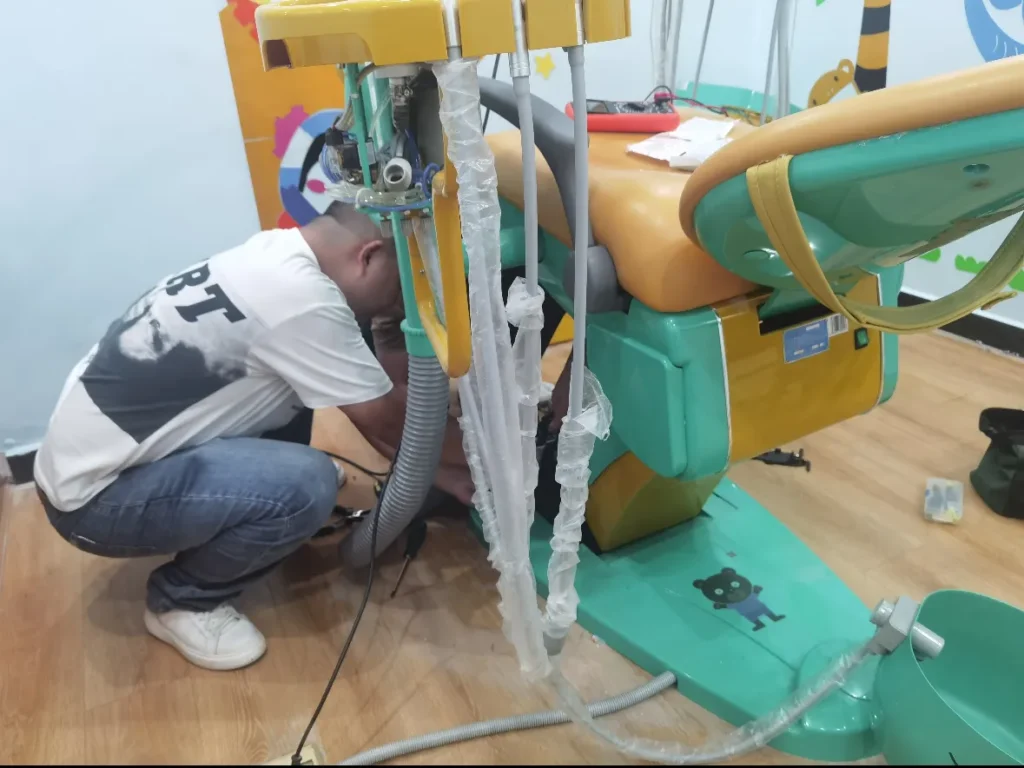
Target Market:
- Dental clinics and hospitals rely on equipment for daily operations.
- Dental schools or training centers need regular maintenance for training equipment.
- Small or rural clinics with limited access to in-house technicians or manufacturer support.
Revenue Streams:
- Service fees for on-site repairs ($100-$500 per visit, depending on equipment and complexity).
- Preventive maintenance contracts ($500-$2,000/year per clinic for regular check-ups).
- Sales of replacement parts with a 20-40% markup.
- Training or consultation fees for clinic staff on basic equipment care.
Competitive Advantage:
- Specialized technical expertise in dental equipment reduces reliance on costly manufacturer services.
- On-site, flexible service that minimizes clinic downtime compared to off-site repairs.
- Competitive pricing and tailored maintenance plans to meet clinic budgets.
Practical Implementation
Startup Steps:
- Market Research: Identify high-demand equipment repair needs in your region by contacting local dental clinics or analyzing common equipment failures (e.g., dental handpieces, compressors). Assess competition from manufacturer services or local technicians.
- Technical Training: Ensure proficiency in repairing and maintaining dental equipment like chairs, scalers, and implant machines. Obtain certifications from manufacturers or technical training programs to build credibility.
- Service Setup: Develop service packages, including emergency repairs, routine maintenance, and part replacements. Create a pricing structure based on equipment type and service complexity. For reliable sourcing of high-quality components, partner with trusted suppliers like KINSUN Dental, a professional dental accessories supplier offering a full range of comprehensive dental unit accessories and equipment parts. KINSUN Dental provides complete solutions, including product samples, competitive quotes, transportation, customs declaration, and clearance services, ensuring seamless supply chain support for your repair business.
- Equipment and Tools: Invest in diagnostic and repair tools (e.g., multimeters, specialized wrenches) and a stock of common replacement parts (e.g., handpiece turbines, O-rings). Source parts from reliable suppliers like KINSUN Dental to ensure compliance with standards and cost efficiency.
- Marketing Strategy: Promote services through dental associations, LinkedIn, or local clinic outreach. Offer introductory discounts or free equipment assessments to attract initial clients. Build a website showcasing expertise and testimonials, highlighting partnerships with reputable suppliers like KINSUN Dental for quality assurance.
- Operations and Logistics: Schedule on-site visits efficiently using booking software (e.g., Calendly). Maintain a mobile toolkit and vehicle for travel to client locations. Provide detailed service reports to ensure transparency.
Required Resources:
- Initial investment for tools and parts inventory ($2,000-$10,000, depending on equipment range).
- Training or certification costs ($500-$2,000 for manufacturer-specific programs).
- Marketing budget for website, ads, or local outreach ($300-$1,000/month initially).
- Vehicle for on-site visits (owned or leased, $200-$500/month for leasing).
Potential Challenges and Solutions:
- Challenge: Building trust with clinics accustomed to manufacturer services.
- Solution: Offer competitive pricing and highlight certifications or successful repair case studies. Emphasize partnerships with trusted suppliers like KINSUN Dental to ensure high-quality parts and services.
- Challenge: Sourcing quality replacement parts.
- Solution: Partner with reputable suppliers like KINSUN Dental, which offers a full range of certified dental accessories and comprehensive logistics support. Maintain a small inventory of high-demand parts to reduce delays.
- Challenge: High competition in urban areas with established technicians.
- Solution: Target underserved rural or small clinics and offer flexible maintenance contracts. Differentiate with faster response times or 24/7 emergency services.
- Challenge: Keeping up with diverse equipment types and technologies.
- Solution: Stay updated through continuous training and manufacturer webinars. Focus on common equipment initially to build expertise.
Scalability:
- Expand services to include calibration or software updates for advanced dental equipment.
- Hire additional technicians to cover larger regions or multiple clinics simultaneously.
- Develop a subscription-based maintenance platform for automated scheduling and recurring revenue.
14. Buying and Selling Second-Hand Dental Equipment
Business Model
Operating a business that buys and sells second-hand dental equipment, such as comprehensive dental units and X-ray machines, capitalizes on the demand for cost-effective solutions among dental clinics and other facilities. The core value proposition is sourcing high-value, functionally used equipment from domestic and international channels, refurbishing it if necessary, and reselling it at competitive prices to budget-conscious buyers. This model leverages the price differential between acquisition and resale to generate significant profits.
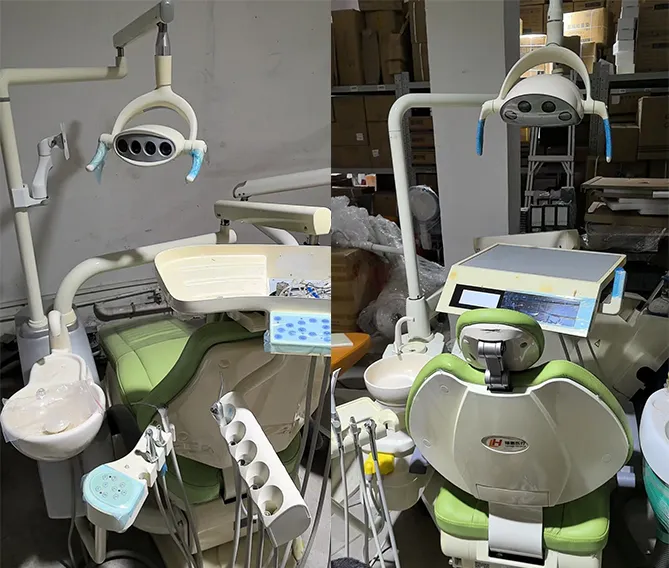
Target Market:
- Small or startup dental clinics are seeking affordable equipment to reduce initial investment costs.
- Dental schools or training centers need functional equipment for educational purposes.
- Factories or research facilities requiring dental equipment for specialized applications.
Revenue Streams:
- Sales of refurbished or used dental equipment with a 30-50% markup over acquisition costs.
- Fees for refurbishment or maintenance services performed before resale.
- Revenue from brokering deals between sellers and buyers, charging a commission (e.g., 10-20% of sale price).
- Sales of replacement parts or accessories bundled with equipment.
Competitive Advantage:
- Access to a network of suppliers for high-quality used equipment at low costs.
- Ability to offer tested, functional equipment at prices significantly lower than new units.
- Expertise in refurbishing and ensuring equipment meets regulatory standards.
Practical Implementation
Startup Steps:
- Market Research: Identify high-demand second-hand dental equipment (e.g., dental chairs, X-ray machines) in your region. Analyze local and international markets using platforms like eBay, Alibaba, or dental industry forums to assess pricing and availability.
- Sourcing Channels: Build relationships with dental clinics, auction houses, or liquidators to acquire used equipment. Explore international suppliers, particularly in regions with surplus equipment, and verify equipment condition and history.
- Refurbishment and Testing: Partner with technicians to inspect and refurbish equipment, ensuring functionality and compliance with health regulations (e.g., FDA, CE). Focus on high-value items like dental units or imaging systems.
- Sales Platform Setup: Create a website or use marketplaces like eBay or B2B platforms to list equipment. Provide detailed descriptions, images, and certification details to build buyer trust.
- Marketing Strategy: Promote through dental associations, LinkedIn, or trade shows. Target budget-conscious clinics with email campaigns or direct outreach, offering warranties or maintenance packages to differentiate.
- Logistics and Compliance: Arrange reliable shipping for large equipment, using specialized logistics providers. Ensure all equipment meets local regulatory standards before resale, and obtain necessary certifications.
Potential Challenges and Solutions:
- Challenge: Ensuring the quality and reliability of used equipment.
- Solution: Implement rigorous inspection and testing processes. Offer short-term warranties to reassure buyers and partner with certified technicians for refurbishment.
- Challenge: Navigating import/export regulations and tariffs.
- Solution: Work with customs brokers to manage international sourcing. Focus on regions with favorable trade policies to minimize costs.
- Challenge: Competing with new equipment suppliers or larger resellers.
- Solution: Target niche markets like small clinics or underserved regions. Highlight cost savings and provide excellent customer support to build loyalty.
- Challenge: Managing logistics for large, heavy equipment.
- Solution: Partner with specialized logistics providers experienced in medical equipment transport. Offer delivery and installation services to add value.
Scalability:
- Expand inventory to include a wider range of equipment, such as intraoral scanners or sterilization units.
- Build a network of regional buyers and sellers to increase transaction volume.
- Offer leasing options or financing plans for clinics to make high-value purchases more accessible.
15. Refurbishing Dental Treatment Units
Business Model
Refurbishing dental treatment units involves acquiring used dental chairs at low prices, upgrading them with new components like valves, cushions, and lights, and reselling them to clinics at a competitive price. The core value proposition is offering cost-effective, high-quality refurbished dental units that look and function like new, catering to budget-conscious clinics, particularly in low-income regions where new equipment is cost-prohibitive. This business leverages low refurbishment costs and high demand for affordable equipment to generate substantial profits.
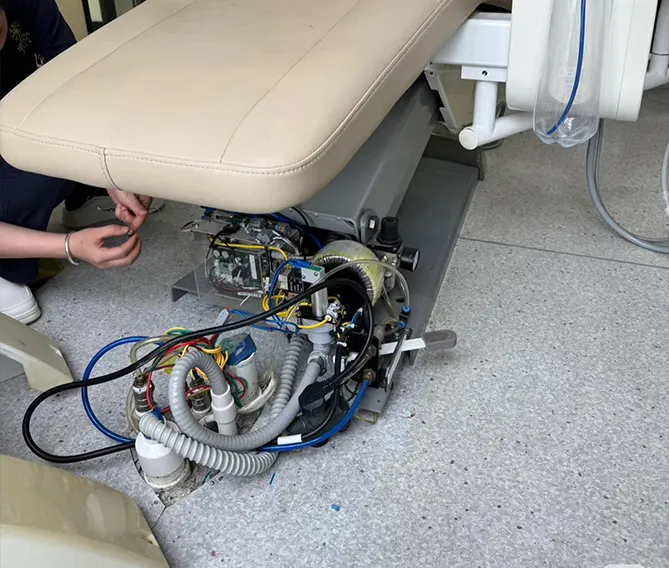
Target Market:
- Small or startup dental clinics in low-income or underserved regions seeking affordable treatment units.
- Dental schools or training centers needing functional equipment for educational purposes.
- Clinics upgrading existing equipment and willing to trade in old units for refurbished ones.
Revenue Streams:
- Sales of refurbished dental treatment units with a 40-60% markup over acquisition and refurbishment costs.
- Fees for additional customization or installation services during delivery.
- Revenue from selling spare parts or maintenance kits alongside refurbished units.
- Trade-in programs where clinics exchange old units for discounts on refurbished ones.
Competitive Advantage:
- Significant cost savings compared to new dental units, appealing to budget-conscious buyers.
- High-quality refurbishment that ensures functionality and aesthetics comparable to new units.
- Focus on underserved markets with limited access to affordable dental equipment.
Practical Implementation
Startup Steps:
- Market Research: Identify demand for refurbished dental treatment units in your target region, particularly in low-income or rural areas. Analyze local clinics’ budgets and equipment needs through surveys or industry contacts.
- Sourcing Used Units: Acquire used dental chairs from clinics upgrading their equipment, auctions, or liquidators. Establish relationships with dental practices or brokers to secure a steady supply of units at low cost.
- Refurbishment Process: Partner with technicians to replace worn components (e.g., valves, upholstery, dental chair lights) and ensure units meet functionality and safety standards. Source high-quality replacement parts from trusted suppliers like KINSUN Dental, a leading provider of a full range of dental chair accessories. KINSUN Dental has helped numerous clients succeed in the refurbished dental chair business by offering comprehensive accessory products and technical support, ensuring cost-effective and reliable refurbishment.
- Quality Assurance: Test refurbished units for performance, safety, and compliance with local regulations. Provide warranties to build buyer confidence.
- Sales and Marketing: Create a website or use B2B platforms to list refurbished units, including detailed descriptions and images. Promote through dental associations, LinkedIn, or trade shows, emphasizing cost savings and quality. Highlight partnerships with suppliers like KINSUN Dental, which provides full-service accessory solutions and technical support, to reassure buyers of your refurbishment quality and reliability. Target low-income regions with tailored outreach.
- Logistics and Delivery: Partner with specialized logistics providers to handle transportation of large units. Offer optional installation services to enhance customer experience.
Required Resources:
- Initial investment for acquiring used dental units ($2,000-$10,000 for initial inventory).
- Refurbishment costs, including parts and labor ($200-$2,000 per unit, depending on condition).
- Tools and workspace for refurbishment ($3,000-$10,000 for setup, including diagnostic equipment).
- Marketing budget for website, ads, or outreach ($300-$1,000/month initially).
Potential Challenges and Solutions:
- Challenge: Ensuring refurbished units meet quality and regulatory standards.
- Solution: Implement rigorous testing and quality control processes. Source certified parts from suppliers like KINSUN Dental and work with experienced technicians to ensure compliance with health regulations.
- Challenge: Building trust with buyers wary of second-hand equipment.
- Solution: Offer warranties (e.g., 6-12 months) and transparent documentation of refurbishment processes. Showcase before-and-after photos, customer testimonials, and partnerships with reputable suppliers like KINSUN Dental.
- Challenge: Competition from new equipment suppliers or other refurbishers.
- Solution: Target low-income regions with limited access to new units. Highlight affordability, quality, and support from trusted partners like KINSUN Dental to differentiate from competitors.
- Challenge: Managing logistics for large, heavy equipment.
- Solution: Partner with logistics providers experienced in medical equipment transport. Negotiate bulk shipping rates to reduce costs.
Scalability:
- Expand refurbishment to other equipment types, such as X-ray machines or sterilizers.
- Develop a trade-in program to acquire more units and build a loyal customer base.
- Establish a regional or international distribution network to reach more underserved markets.
16. Providing Dental Instrument Sterilization Services for Clinics
Business Model
Offering centralized sterilization services for dental clinics involves collecting used dental instruments, professionally cleaning and disinfecting them, and returning sterile instruments for reuse. The core value proposition is relieving clinics of the complex, time-consuming, and costly process of sterilizing instruments, allowing them to save on equipment and labor costs. Revenue is generated through per-use fees charged to clinics for each set of sterilized instruments, creating a scalable service model that meets the high demand for compliant sterilization.
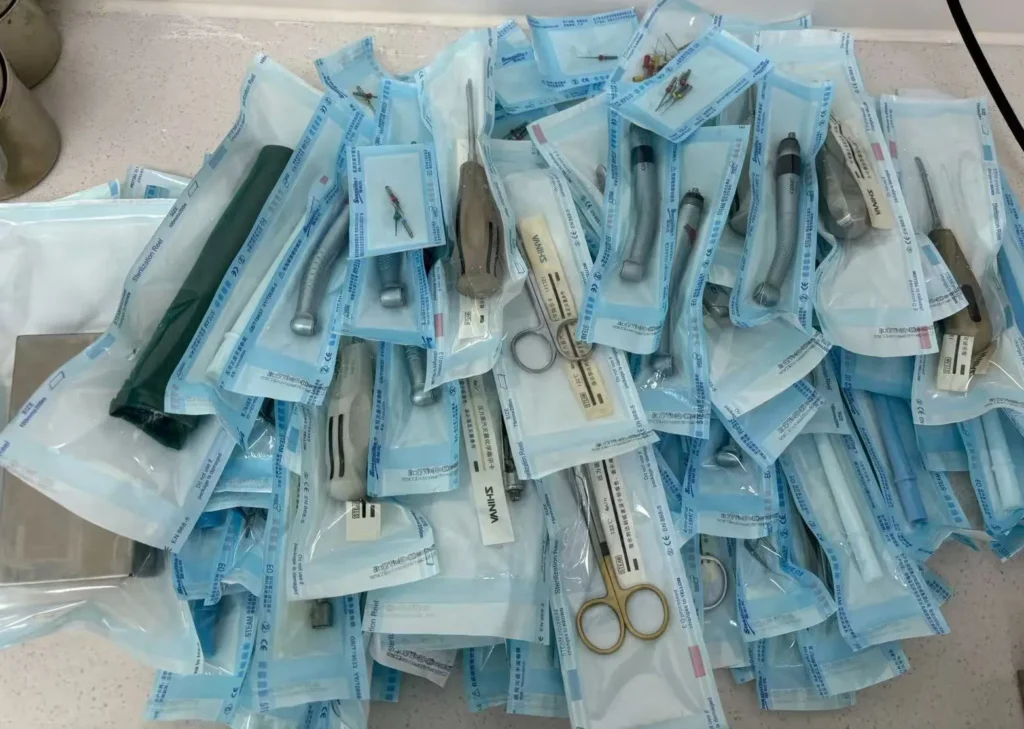
Target Market:
- Small to medium-sized dental clinics seeking to reduce in-house sterilization costs.
- Dental practices with limited space or resources for advanced sterilization equipment.
- Dental schools or mobile dental units requiring reliable sterilization services.
Revenue Streams:
- Per-use fees for sterilizing instrument sets ($10-$50 per cycle, depending on volume and instrument type).
- Subscription-based contracts for regular sterilization services ($500-$2,000/month per clinic).
- Sales of sterilization-related accessories (e.g., sterile pouches, indicators) with a 20-30% markup.
- Fees for pickup and delivery services, if not included in the base fee.
Competitive Advantage:
- Cost-effective, professional sterilization that complies with stringent health regulations (e.g., CDC, ISO 13485).
- Convenience for clinics, reducing their need for expensive autoclaves and trained staff.
- Scalable service model that can serve multiple clinics in a region, optimizing operational efficiency.
Practical Implementation
Startup Steps:
- Market Research: Assess the demand for sterilization services by surveying local dental clinics. Identify their pain points, such as high costs or time spent on sterilization, and analyze competition from in-house or existing third-party services.
- Regulatory Compliance: Ensure compliance with local and international sterilization standards (e.g., CDC, OSHA, or regional health regulations). Obtain necessary certifications for medical device sterilization and facility operations.
- Facility Setup: Establish a centralized sterilization facility equipped with industrial-grade autoclaves, ultrasonic cleaners, and packaging systems. Ensure the facility meets cleanroom standards for infection control.
- Service Logistics: Develop a system for collecting used instruments from clinics, sterilizing them, and delivering sterile sets. Use secure, trackable containers and partner with logistics providers for efficient pickup and delivery.
- Client Partnerships: Contact dental clinics to offer sterilization services, emphasizing cost savings and compliance. Offer trial periods or discounted rates to secure initial contracts.
- Marketing Strategy: Promote through dental associations, LinkedIn, or local outreach. Create a website showcasing compliance certifications, service reliability, and client testimonials. Highlight the convenience of outsourcing sterilization.
Required Resources:
- Initial investment for sterilization equipment ($10,000-$50,000 for autoclaves, ultrasonic cleaners, and packaging systems).
- Facility setup costs for a compliant cleanroom ($5,000-$20,000, depending on scale).
- Logistics costs for pickup/delivery vehicles or third-party services ($500-$2,000/month).
- Marketing budget for website, ads, and outreach ($300-$1,000/month initially).
Potential Challenges and Solutions:
- Challenge: Ensuring compliance with strict sterilization and infection control standards.
- Solution: Invest in certified equipment and train staff in regulatory protocols. Conduct regular audits and maintain detailed documentation for transparency.
- Challenge: Building trust with clinics for outsourced sterilization.
- Solution: Offer certifications, third-party validations, and client references. Provide transparent tracking of instruments to ensure accountability.
- Challenge: Managing logistics for timely pickup and delivery.
- Solution: Use scheduling software and partner with reliable logistics providers. Optimize routes to serve multiple clinics efficiently.
- Challenge: Competition from in-house sterilization or other service providers.
- Solution: Differentiate with competitive pricing, fast turnaround times, and bundled services (e.g., maintenance of instruments). Target smaller clinics with limited resources.
Scalability:
- Expand services to include sterilization for other medical fields (e.g., veterinary, surgical).
- Increase capacity by investing in additional equipment to serve more clinics.
- Develop a subscription-based platform for automated scheduling and billing to streamline operations.
17. Providing Training Services for Dental Clinic Staff
Business Model
Offering training services for dental clinic staff, including front-desk guidance, patient communication skills, and standardized operating procedures (SOPs) for treatment processes, enhances clinic professionalism and patient satisfaction. The core value proposition is improving staff performance to boost clinic competitiveness by delivering high-quality customer service and efficient operations. Revenue is generated through training program fees, helping clinics attract and retain patients through improved experiences.
Target Market:
- Small to medium-sized dental clinics aiming to enhance staff skills and patient satisfaction.
- New dental practices seeking to establish professional standards from the outset.
- Dental chains or franchises standardizing operations across multiple locations.
Revenue Streams:
- Fees for in-person or online training workshops ($500-$2,000 per session, depending on scope and duration).
- Retainer contracts for ongoing training or follow-up sessions ($1,000-$5,000/month per clinic).
- Sales of training materials, such as SOP manuals or video courses ($100-$500 per package).
- Certification programs for staff, with fees for accreditation or continuing education credits.
Competitive Advantage:
- Specialized focus on dental industry needs, addressing specific challenges like patient communication and treatment workflows.
- Customizable training programs tailored to individual clinic goals and staff roles.
- Measurable outcomes, such as improved patient satisfaction scores or reduced operational errors.
Practical Implementation
Startup Steps:
- Market Research: Identify training needs by surveying dental clinics or analyzing common pain points, such as poor patient communication or inefficient workflows. Use industry forums or dental associations to gather insights.
- Program Development: Design training modules covering front-desk operations (e.g., appointment scheduling, patient greetings), patient communication (e.g., handling complaints, explaining treatments), and SOPs for clinical processes (e.g., sterilization, treatment setup). Include interactive elements like role-playing or case studies.
- Delivery Methods: Offer training through in-person workshops, online webinars, or hybrid formats. Use platforms like Zoom or Teachable for virtual sessions and provide downloadable resources for ongoing reference.
- Client Acquisition: Reach out to clinics via LinkedIn, dental trade shows, or local networks. Offer free introductory sessions or assessments to demonstrate value and secure contracts.
- Marketing Strategy: Build a website showcasing training benefits, testimonials, and sample curricula. Promote through content marketing (e.g., blogs on improving patient retention) and targeted ads on dental industry platforms.
- Evaluation and Certification: Implement post-training evaluations to measure staff improvement. Offer certifications for completed programs to enhance staff resumes and clinic credibility.
Required Resources:
- Initial investment for curriculum development and training materials ($1,000-$5,000 for content creation).
- Online platform costs (e.g., Teachable at $39-$119/month, Zoom at $15-$20/month).
- Marketing budget for website, ads, and outreach ($300-$1,000/month initially).
- Trainers with dental industry experience or partnerships with dental consultants ($500-$2,000 per project).
Potential Challenges and Solutions:
- Challenge: Convincing clinics to invest in staff training.
- Solution: Highlight ROI through case studies showing improved patient satisfaction or retention. Offer flexible pricing or trial sessions to reduce perceived risk.
- Challenge: Tailoring training to diverse clinic needs.
- Solution: Conduct pre-training assessments to customize modules. Offer modular programs that allow clinics to select specific training areas.
- Challenge: Competition from general business training providers.
- Solution: Emphasize dental-specific expertise and practical, actionable training focused on clinical workflows and patient interactions.
- Challenge: Measuring training effectiveness.
- Solution: Use surveys, patient feedback, and clinic performance metrics (e.g., appointment retention rates) to demonstrate impact. Provide follow-up support to reinforce learning.
Scalability:
- Expand training offerings to include advanced topics like digital dentistry or leadership skills for clinic managers.
- Develop an online training platform for self-paced learning, increasing accessibility.
- Partner with dental schools or associations to offer accredited programs for broader reach.
18. Providing a Dental Academic Exchange and Practical Training Platform
Business Model
Creating a platform that connects dentists and dental students with renowned professors for practical training courses, such as dental implantology, teeth whitening, and orthodontics, addresses the growing demand for professional skill enhancement. The core value proposition is offering a centralized hub for high-quality, hands-on dental education while facilitating academic exchange. Additionally, the platform can promote advanced dental equipment, generating revenue through sales commissions or sponsorships from manufacturers.
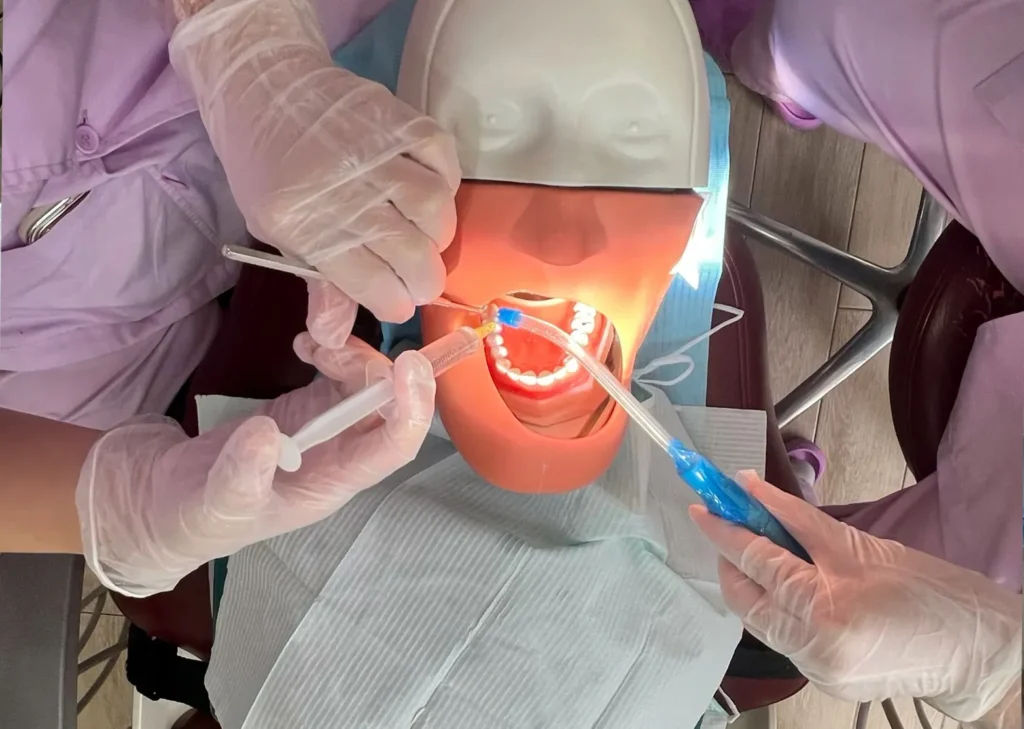
Target Market:
- Practicing dentists seeking to upgrade skills or earn continuing education credits.
- Dental students or recent graduates looking for practical training to enhance employability.
- Dental schools or clinics interested in group training programs for staff.
Revenue Streams:
- Fees for course registrations ($100-$1,000 per participant, depending on course complexity and duration).
- Subscription fees for platform access to exclusive content or ongoing webinars ($50-$200/month).
- Commissions from dental equipment sales (10-20% per sale) promoted through the platform.
- Sponsorship or advertising fees from equipment manufacturers or dental brands.
Competitive Advantage:
- Direct access to renowned dental professors and specialized, practical training programs.
- Dual revenue model combining education fees with equipment promotion opportunities.
- Online and in-person course options, catering to diverse learning preferences and global audiences.
Practical Implementation
Startup Steps:
- Market Research: Identify high-demand training topics (e.g., implantology, orthodontics) by surveying dentists and students or analyzing industry trends. Use platforms like ResearchGate or dental forums to gather insights.
- Platform Development: Build an online platform using tools like Teachable or WordPress with LMS plugins to host courses, webinars, and forums. Include features for course registration, live sessions, and community discussions.
- Instructor Partnerships: Collaborate with respected dental professors or experts to develop and lead courses. Negotiate revenue-sharing agreements (e.g., 50-70% of course fees) to attract high-profile instructors.
- Equipment Partnerships: Partner with dental equipment manufacturers to showcase products (e.g., implant systems, whitening devices) during courses. Secure sponsorships or affiliate deals for equipment sales.
- Marketing Strategy: Promote the platform through dental associations, LinkedIn, and trade shows. Offer free webinars or trial courses to attract users. Use content marketing (e.g., blogs on dental advancements) to build authority.
- Operations and Support: Provide robust customer support for course participants via email or live chat. Ensure compliance with continuing education standards and offer certifications for completed courses.
Required Resources:
- Initial investment for platform development ($2,000-$10,000 for website and LMS setup).
- Marketing budget for ads, webinars, and outreach ($500-$2,000/month initially).
- Course production costs, including video recording and editing ($1,000-$5,000 per course).
- Partnerships with instructors and equipment manufacturers (may involve profit-sharing or upfront fees).
Potential Challenges and Solutions:
- Challenge: Attracting high-profile instructors to the platform.
- Solution: Offer competitive revenue-sharing models and highlight platform reach to global audiences. Start with local or emerging experts to build credibility.
- Challenge: Ensuring course quality and regulatory compliance.
- Solution: Vet instructors for expertise and ensure courses meet continuing education standards. Include peer reviews or participant feedback to maintain quality.
- Challenge: Competing with established dental education providers.
- Solution: Focus on niche, practical courses (e.g., hands-on implantology) and leverage equipment partnerships to differentiate. Offer affordable pricing for students or small clinics.
- Challenge: Building a user base for a new platform.
- Solution: Provide free introductory content or discounted courses to attract initial users. Partner with dental schools or associations to expand reach.
Scalability:
- Expand course offerings to include emerging fields like digital dentistry or AI in diagnostics.
- Develop a mobile app for on-the-go learning and community engagement.
- License platform content to dental schools or create white-labeled training programs for corporate clients.
19. Creating a Dental Knowledge Website or YouTube Channel for Ad and Affiliate Revenue
Business Model
Building a website or YouTube channel focused on sharing dental knowledge, such as oral health tips, dental care practices, and teeth protection advice, attracts an audience interested in dental wellness. The core value proposition is providing accessible, engaging, and reliable content to drive traffic, which can be monetized through advertising and affiliate marketing partnerships with dental brands. This model leverages content creation to generate passive income from ads and commissions while promoting dental products.
Target Market:
- General consumers seeking dental health information (e.g., parents, young adults).
- Dental enthusiasts or students looking for educational content on oral care.
- Dental clinics or brands seeking promotional opportunities through targeted audiences.
Revenue Streams:
- Advertising revenue from platforms like Google AdSense or YouTube monetization ($1-$10 per 1,000 views, depending on niche and region).
- Affiliate marketing commissions from promoting dental products (e.g., toothbrushes, whitening kits) with 5-20% per sale.
- Sponsored content deals with dental brands for product placements or reviews ($200-$2,000 per post, depending on audience size).
- Premium content or subscription-based resources (e.g., exclusive guides) for additional revenue.
Competitive Advantage:
- Niche focus on dental health, attracting a targeted audience for high-value ad and affiliate partnerships.
- Engaging, trustworthy content developed with dental expertise to build audience loyalty.
- Multi-platform presence (website, YouTube, social media) to maximize traffic and revenue streams.
Practical Implementation
Startup Steps:
- Market Research: Identify popular dental topics (e.g., teeth whitening, cavity prevention) using tools like Google Trends, YouTube Analytics, or social media insights. Analyze competitor content to find gaps in coverage.
- Content Creation: Develop high-quality, informative content, such as articles, videos, or infographics on dental care. Collaborate with dental professionals to ensure accuracy and credibility. Focus on SEO-optimized topics to drive organic traffic.
- Platform Setup: Build a website using WordPress or Wix ($5-$20/month for hosting) or a YouTube channel (free). Optimize for user experience with clear navigation, professional design, and mobile compatibility.
- Monetization Strategy: Integrate Google AdSense for website ads or enable YouTube monetization once eligibility is met (1,000 subscribers, 4,000 watch hours). Join affiliate programs with dental brands (e.g., Amazon Associates, dental product retailers) to promote products.
- Marketing Strategy: Promote content through social media (e.g., Instagram, TikTok) with short, engaging clips or posts. Use SEO techniques to rank higher on Google and YouTube searches. Engage with audiences through comments and Q&A sessions to build community.
- Partnerships: Reach out to dental brands for sponsorships or affiliate deals. Offer product reviews or dedicated content to showcase their items, ensuring compliance with advertising regulations.
Required Resources:
- Initial investment for website hosting and design ($200-$1,000 for setup; $5-$20/month ongoing).
- Content creation tools (e.g., Canva Pro at $12.99/month, video editing software like Adobe Premiere at $20.99/month).
- Marketing budget for social media ads or influencer collaborations ($100-$500/month initially).
- Access to dental professionals for content validation (may involve consulting fees, $100-$500 per project).
Potential Challenges and Solutions:
- Challenge: Building an audience for a new website or channel.
- Solution: Focus on high-demand, low-competition topics and leverage social media to drive initial traffic. Offer free resources (e.g., dental care checklists) to attract visitors.
- Challenge: Ensuring content accuracy and regulatory compliance.
- Solution: Partner with dental experts to review content. Avoid medical claims that require professional credentials and adhere to advertising regulations.
- Challenge: Competing with established health or dental content creators.
- Solution: Differentiate with unique formats (e.g., patient-focused Q&A videos) or niche topics (e.g., eco-friendly dental care). Build a strong brand identity to stand out.
- Challenge: Slow monetization in the early stages.
- Solution: Start with affiliate marketing for quicker revenue and reinvest earnings into content quality and promotion. Diversify with sponsored posts to accelerate income.
Scalability:
- Expand content to include podcasts, webinars, or eBooks for additional revenue streams.
- Build a membership platform for premium content or exclusive dental consultations.
- Partner with more dental brands or expand to related niches (e.g., general health, wellness) to increase traffic and partnerships.
20. Providing Dental Industry Trade Show Services
Business Model
Offering comprehensive trade show services for dental industry companies seeking to participate in global dental exhibitions addresses the logistical and informational needs of exhibitors. The core value proposition is providing end-to-end solutions, including exhibition information, booth reservation, booth design and setup, visa processing, and hotel bookings, enabling clients to focus on showcasing their products. Revenue is generated through service fees for tailored packages that streamline the exhibition process for dental equipment manufacturers, suppliers, or clinics.

Target Market:
- Dental equipment manufacturers and suppliers aiming to expand their global presence at trade shows.
- Dental startups or small businesses seeking cost-effective participation in international exhibitions.
- Dental professionals or associations attending trade shows for networking or product sourcing.
Revenue Streams:
- Service fees for trade show support packages ($2,000-$10,000 per event, depending on scope).
- Fees for individual services, such as booth design ($1,000-$5,000) or visa processing ($200-$500 per person).
- Commissions from partnerships with exhibition organizers or travel agencies (10-20% of bookings).
- Revenue from add-on services, like promotional material creation or on-site staff support.
Competitive Advantage:
- Specialized expertise in dental industry exhibitions, understanding unique exhibitor needs.
- Comprehensive, one-stop services that reduce logistical burdens for clients.
- Strong networks with global exhibition organizers, venues, and service providers for seamless execution.
Practical Implementation
Startup Steps:
- Market Research: Identify major global dental trade shows (e.g., IDS in Germany, ADA Annual Meeting) and analyze exhibitor needs, such as booth requirements, visa processes, or travel logistics. Use industry reports or contact organizers for insights.
- Service Development: Create service packages covering exhibition information (e.g., requirements, schedules), booth reservation, custom booth design and setup, visa and travel arrangements, and on-site support. Offer flexible options for small and large exhibitors.
- Partnerships: Build relationships with exhibition organizers, booth contractors, travel agencies, and visa consultants. Negotiate preferred rates to offer competitive pricing to clients.
- Business Setup: Establish a professional brand with a website detailing services, case studies, and client testimonials. Obtain necessary business licenses for event management or consulting services.
- Marketing Strategy: Promote through dental industry networks, LinkedIn, and trade publications. Attend dental trade shows to network with potential clients and offer free consultations on exhibition planning.
- Operations and Delivery: Use project management tools (e.g., Asana, Trello) to coordinate services, from booth design to travel logistics. Provide clients with detailed itineraries and regular updates to ensure a smooth experience.
Potential Challenges and Solutions:
- Challenge: Coordinating complex logistics across multiple countries.
- Solution: Partner with reliable local vendors in target regions and use project management tools to streamline operations. Hire multilingual staff to handle international clients.
- Challenge: Building trust with clients new to your services.
- Solution: Showcase successful case studies and offer references from past clients. Provide transparent pricing and detailed service plans to build confidence.
- Challenge: Competition from general event management firms.
- Solution: Differentiate by specializing in dental industry exhibitions, offering tailored insights and networks specific to dental trade shows.
- Challenge: High costs for large-scale booth setups or international travel.
- Solution: Start with smaller clients or basic services (e.g., booth reservation, information). Reinvest profits to expand capabilities for larger projects.
Scalability:
- Expand services to include virtual trade show support or hybrid event planning.
- Build a network of regional offices to serve clients in multiple markets.
- Develop a subscription-based platform for ongoing trade show insights or pre-negotiated booth packages.
Conclusion
The dental industry is brimming with opportunities for aspiring entrepreneurs and professionals ready to make their mark. From innovative product ventures to specialized services, these 20 dental business ideas offer practical pathways to success in a growing market. Don’t wait—seize the moment, leverage your skills, and take the first step toward building a thriving dental business today!


